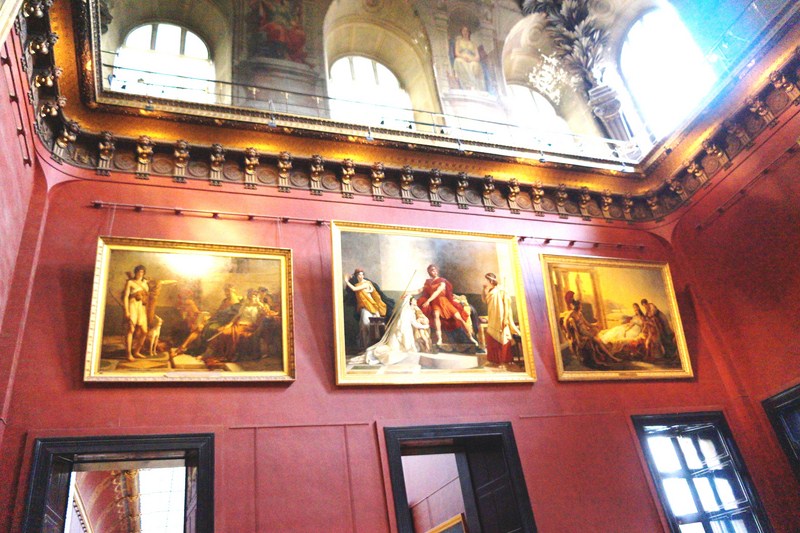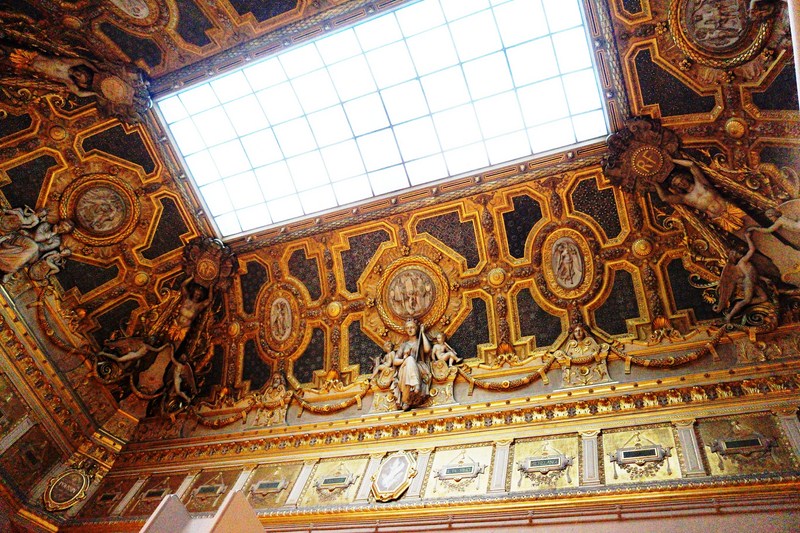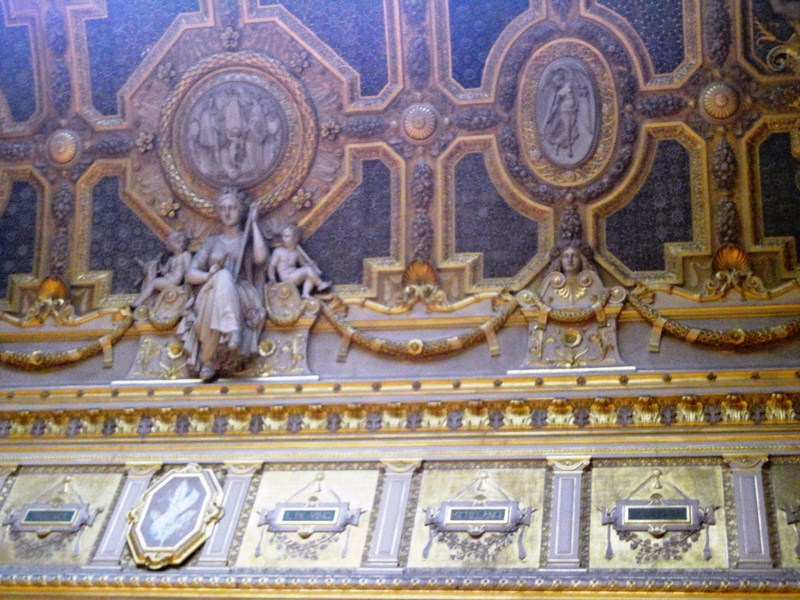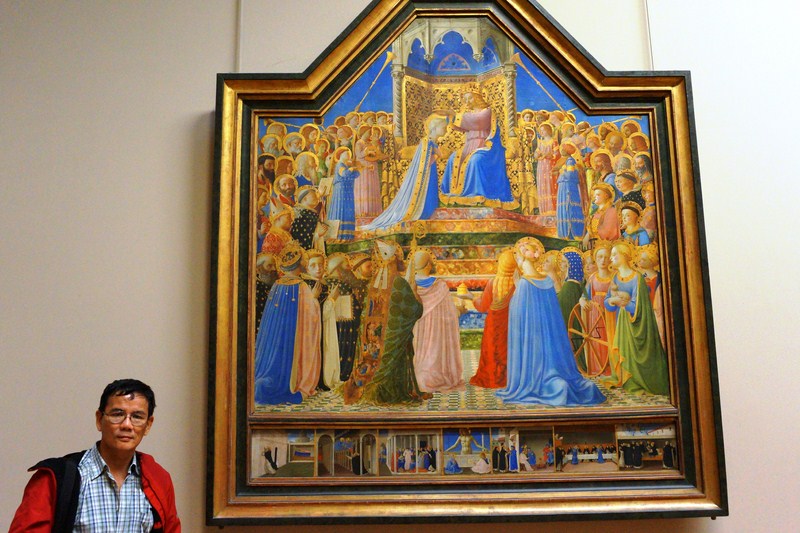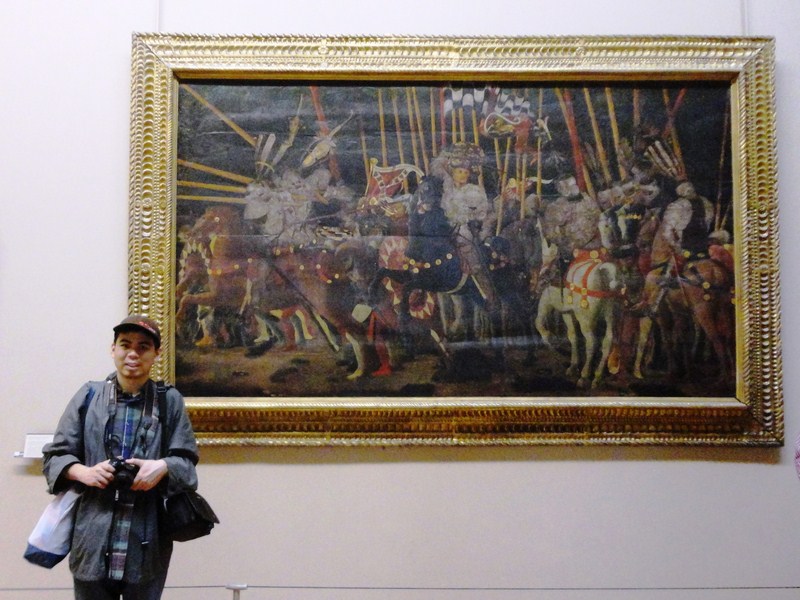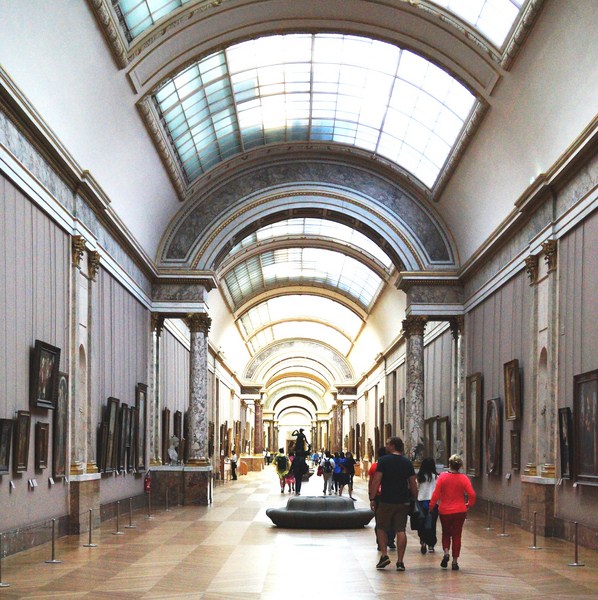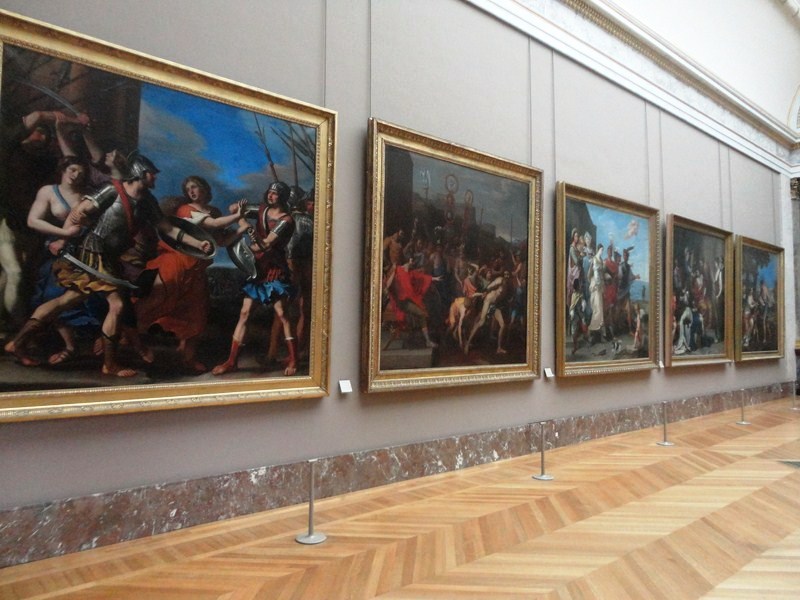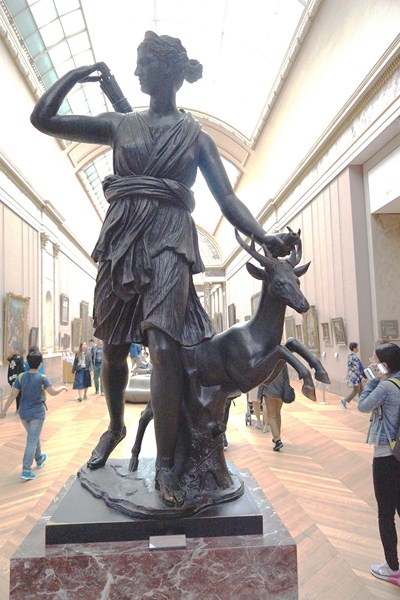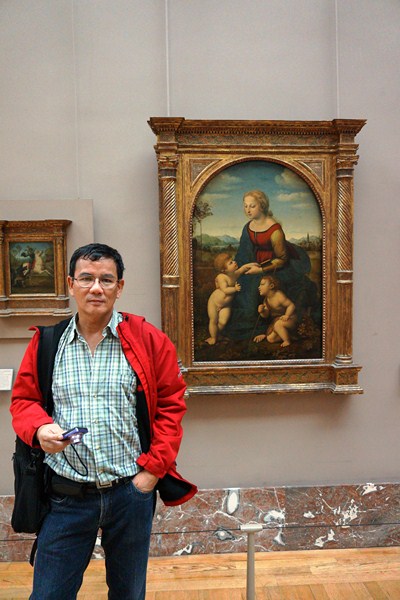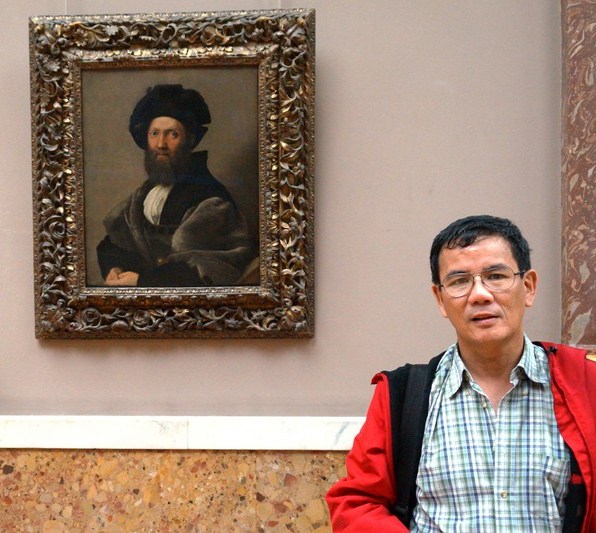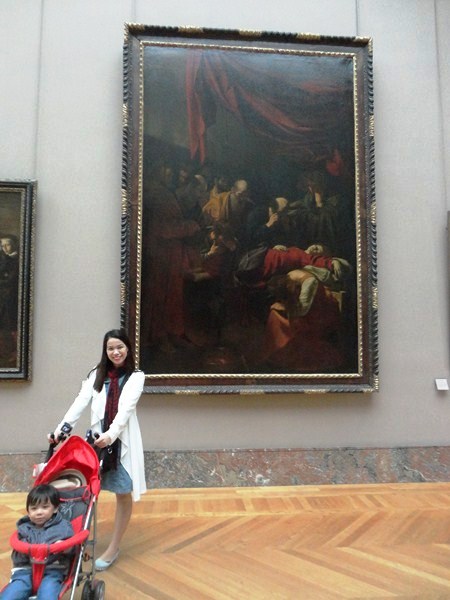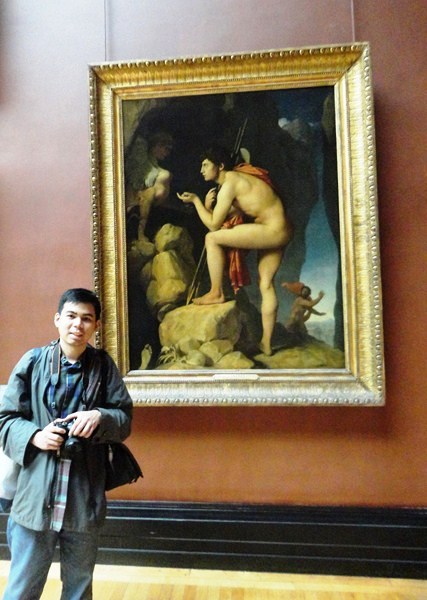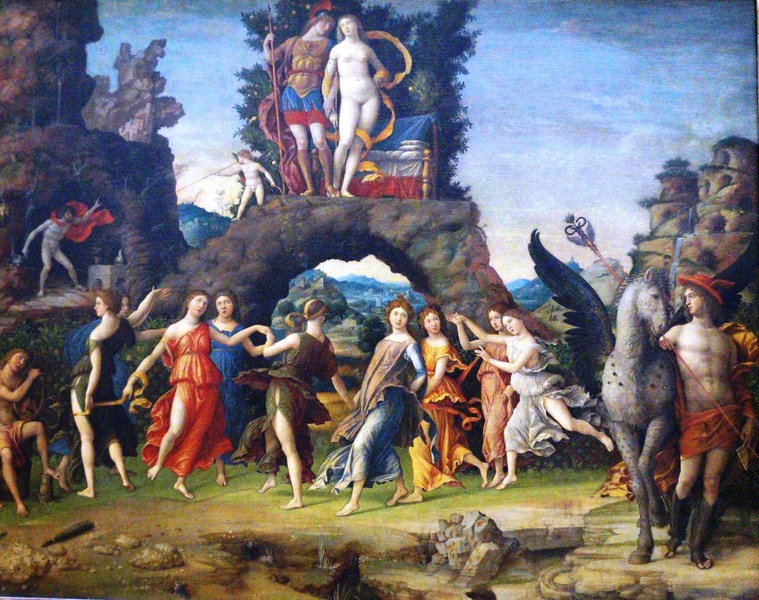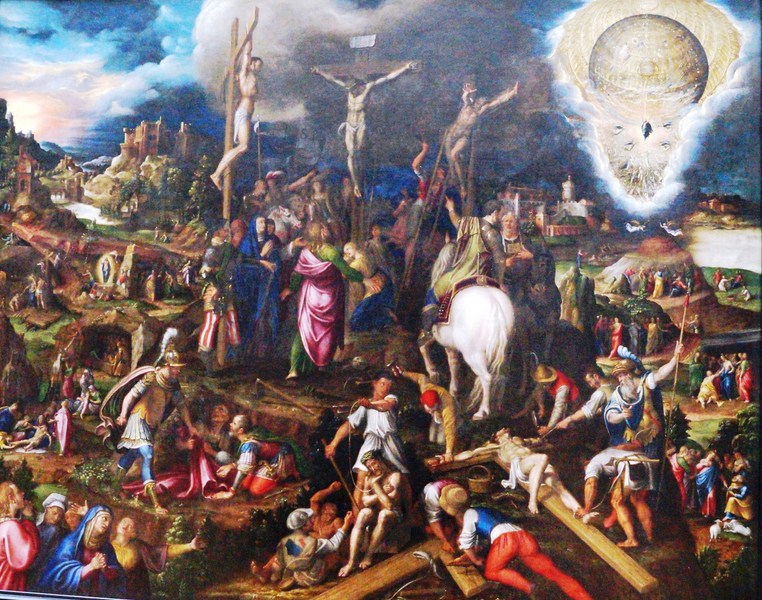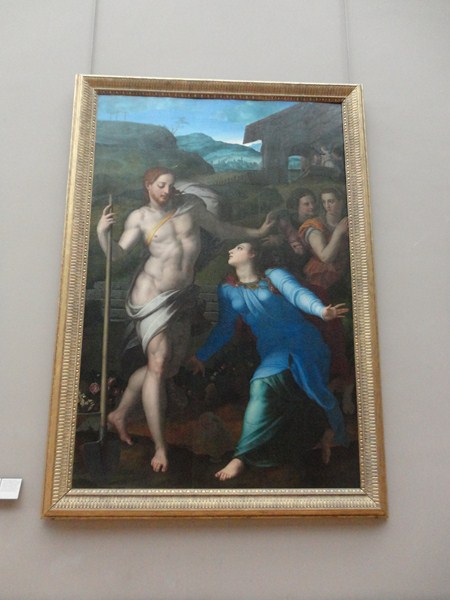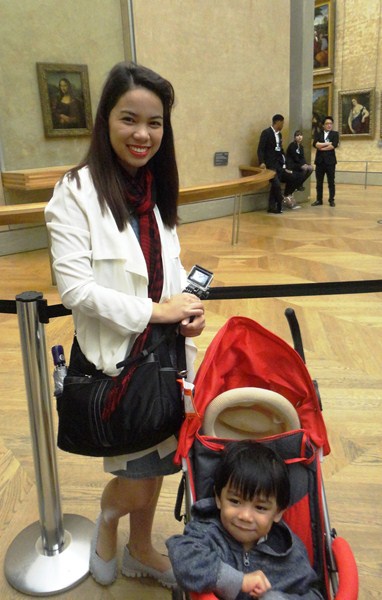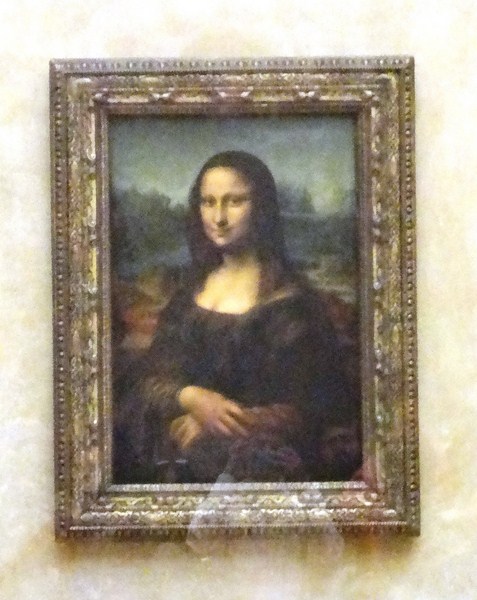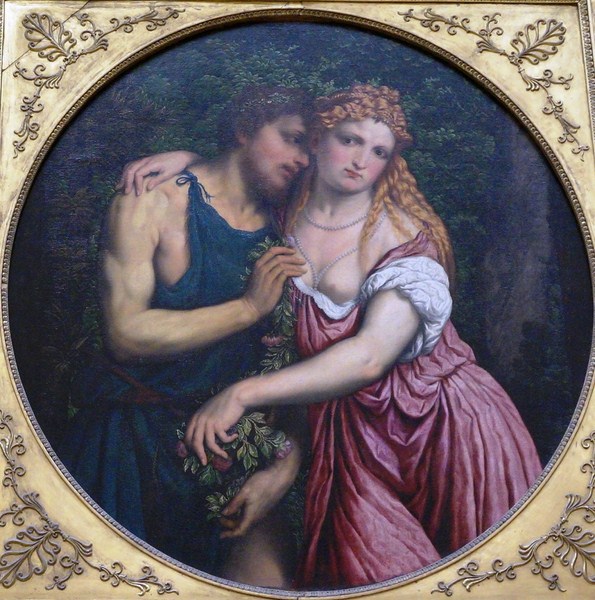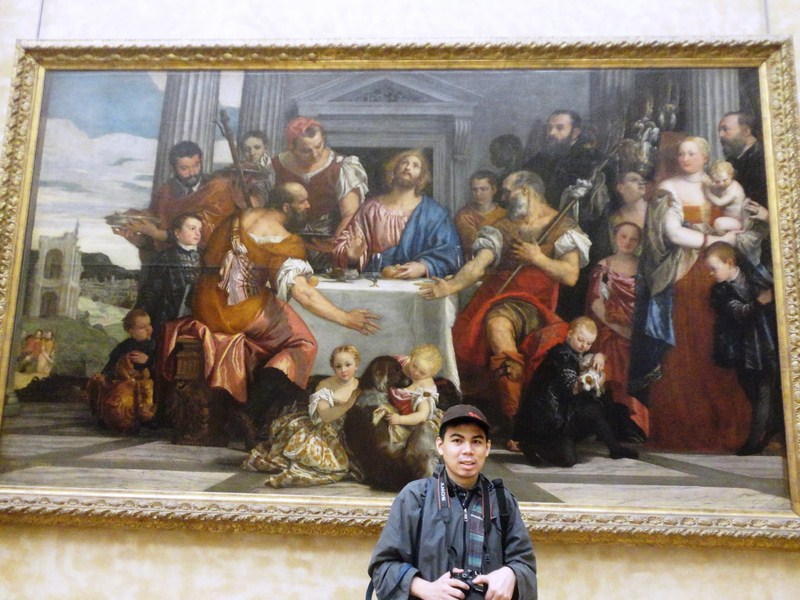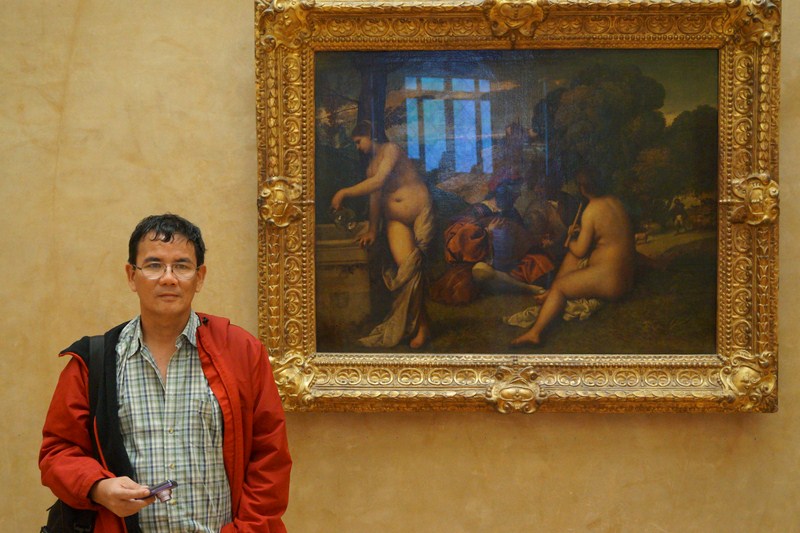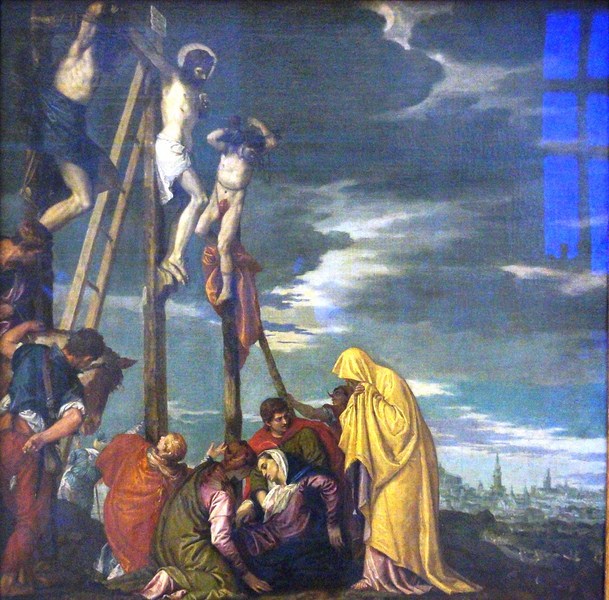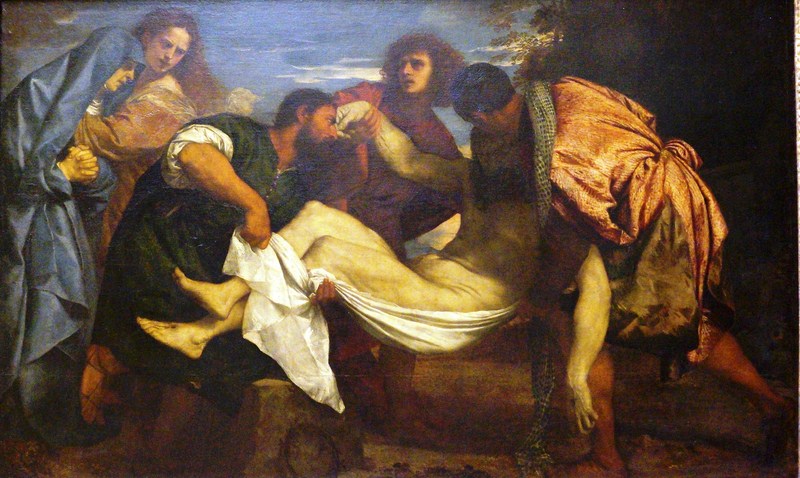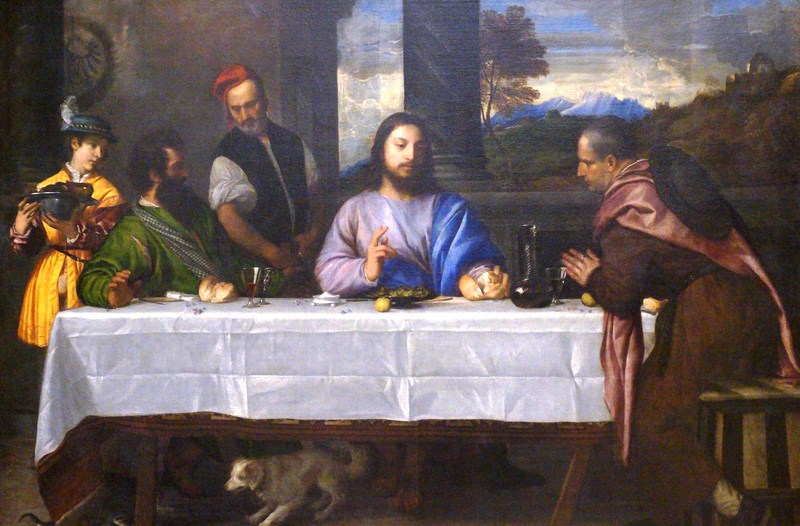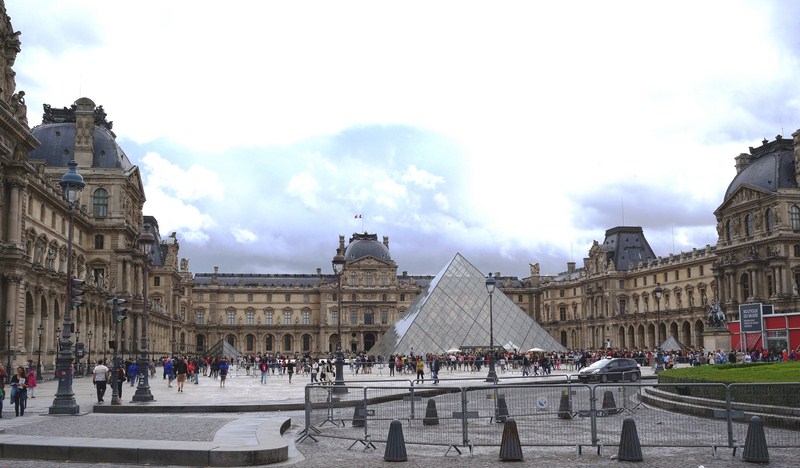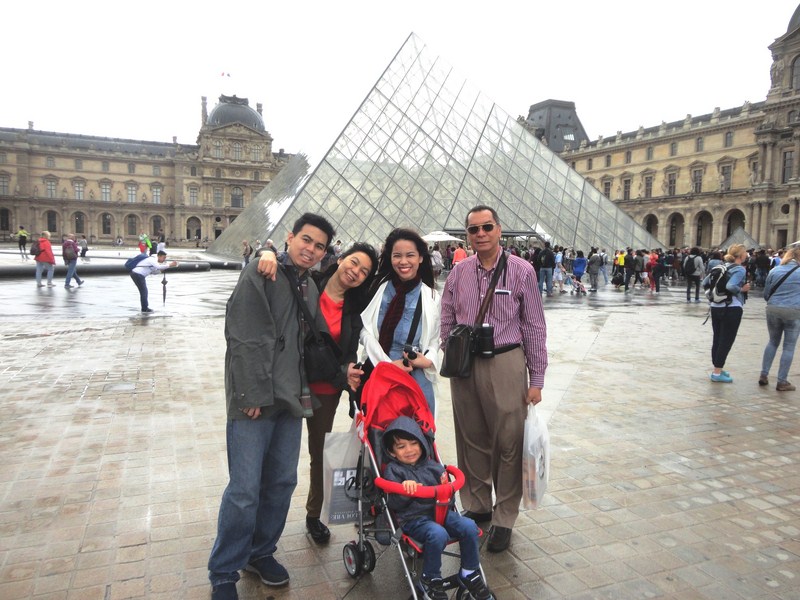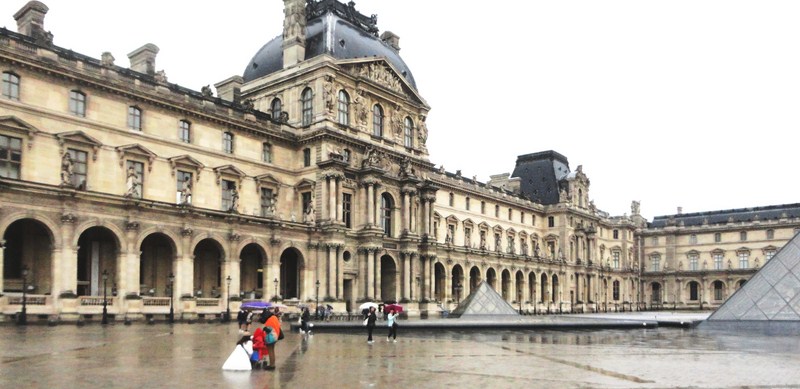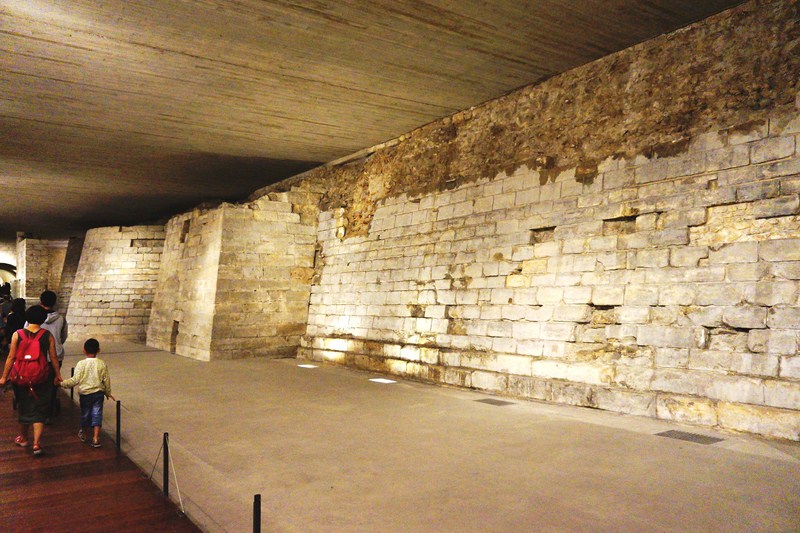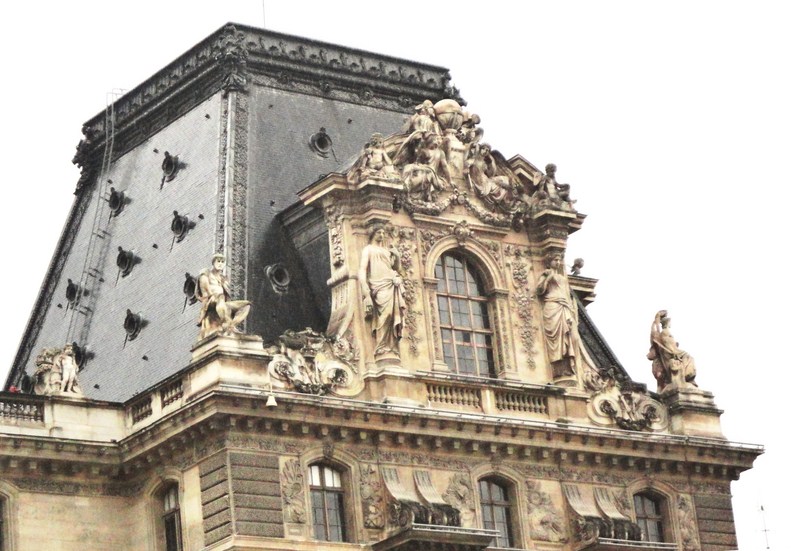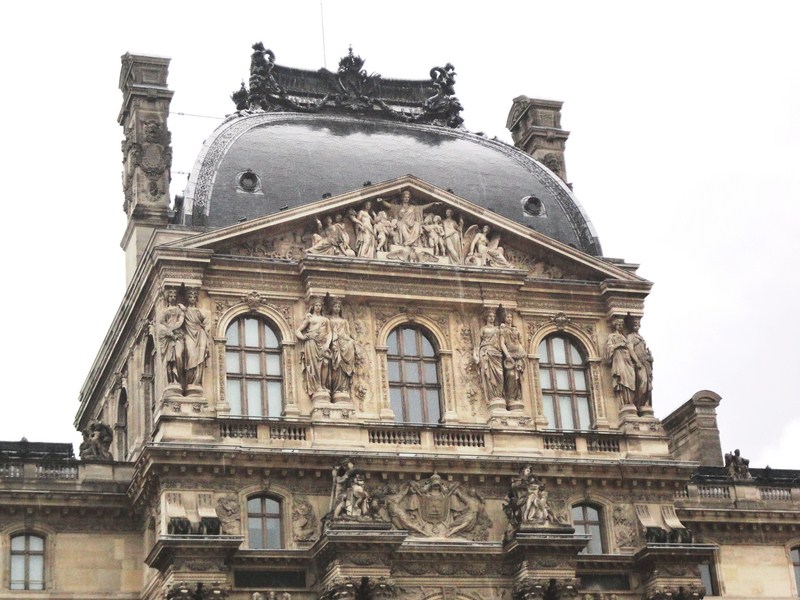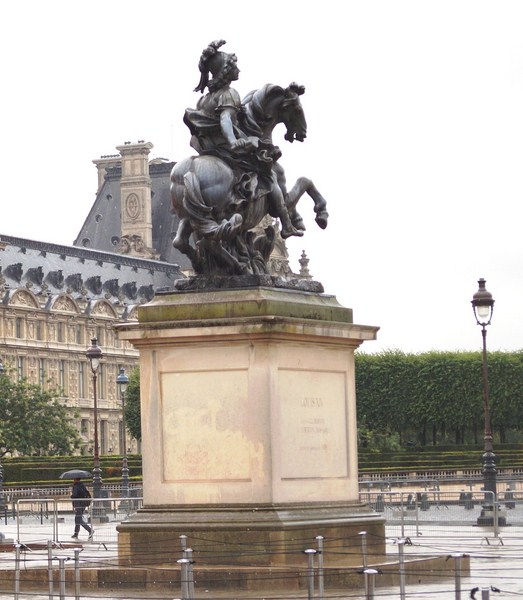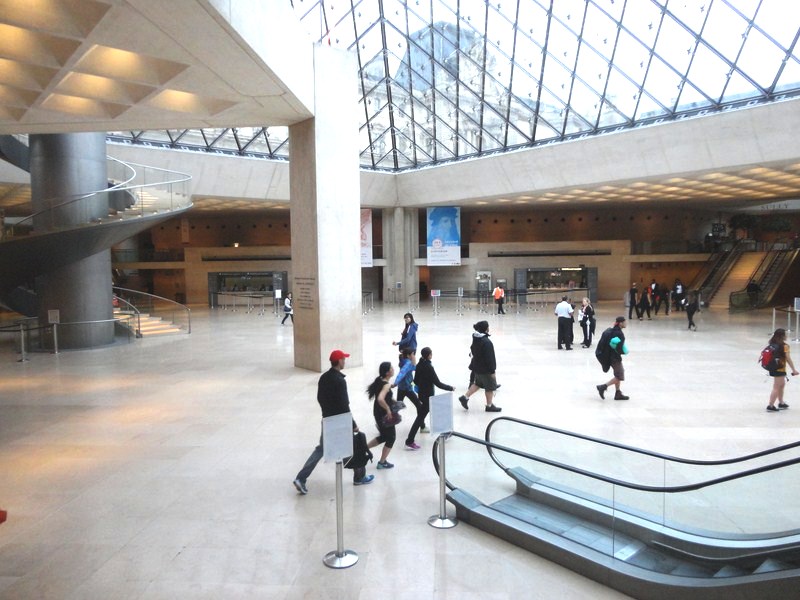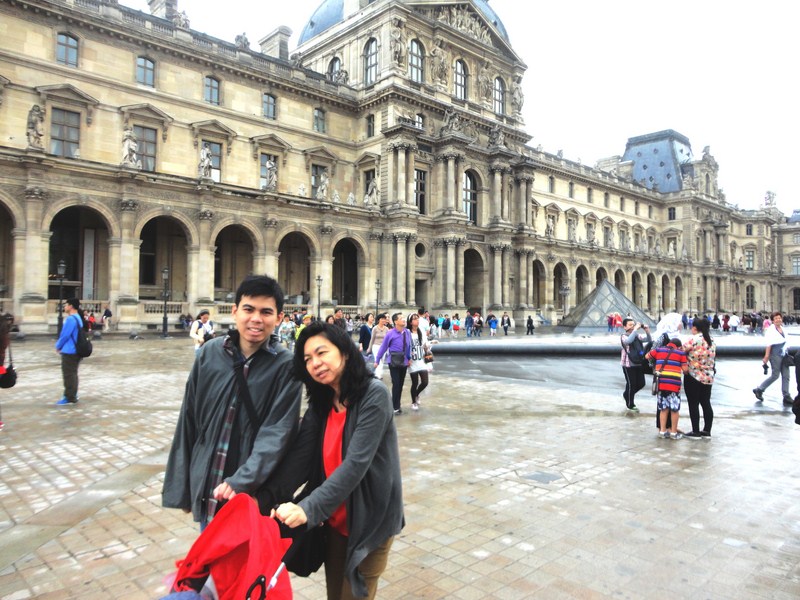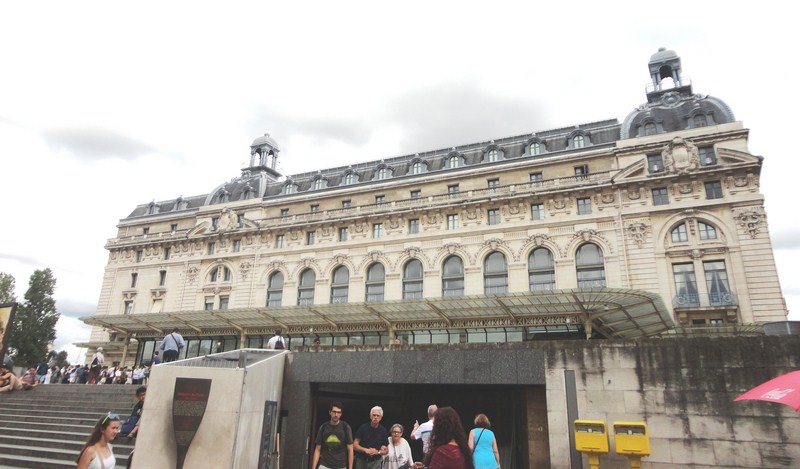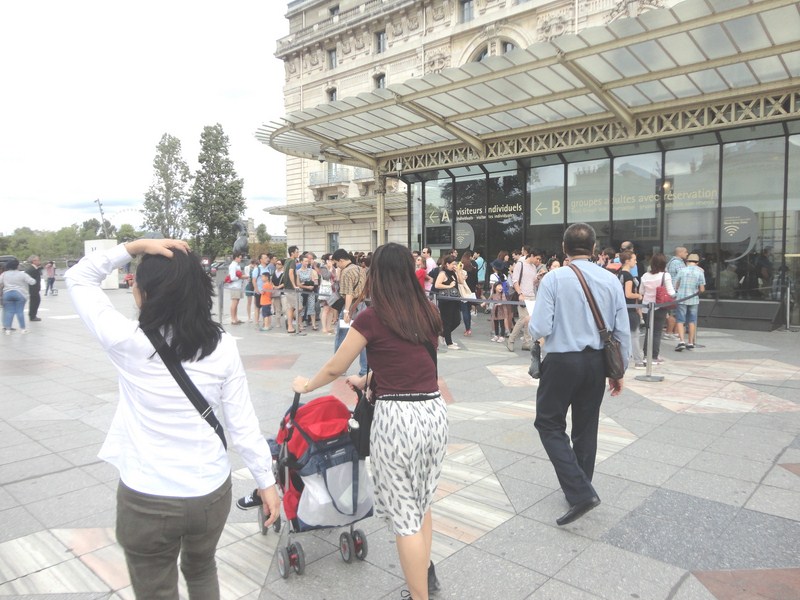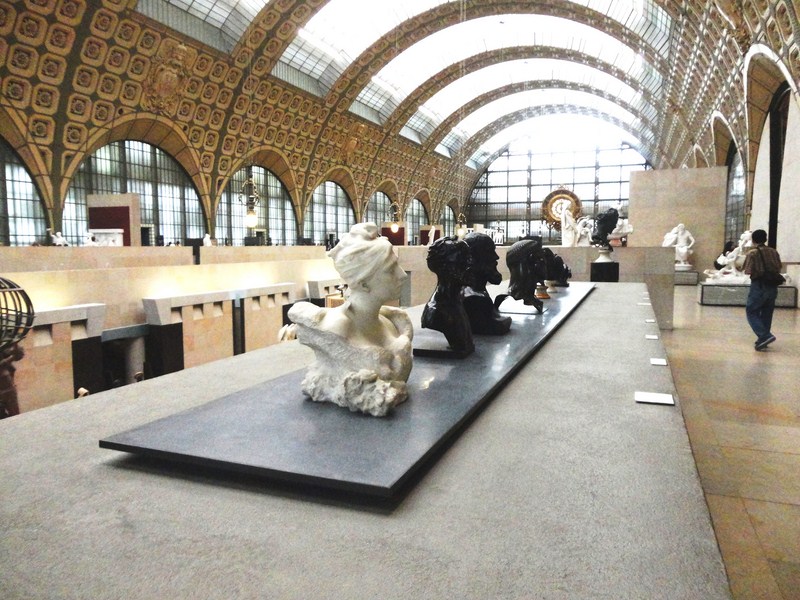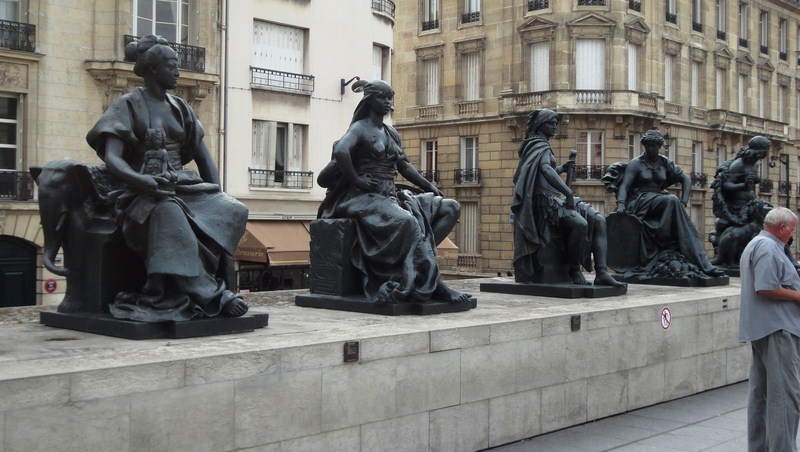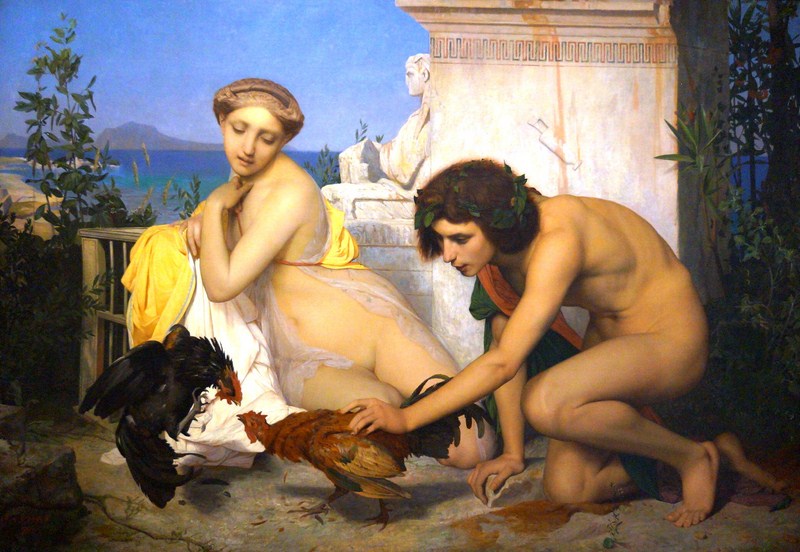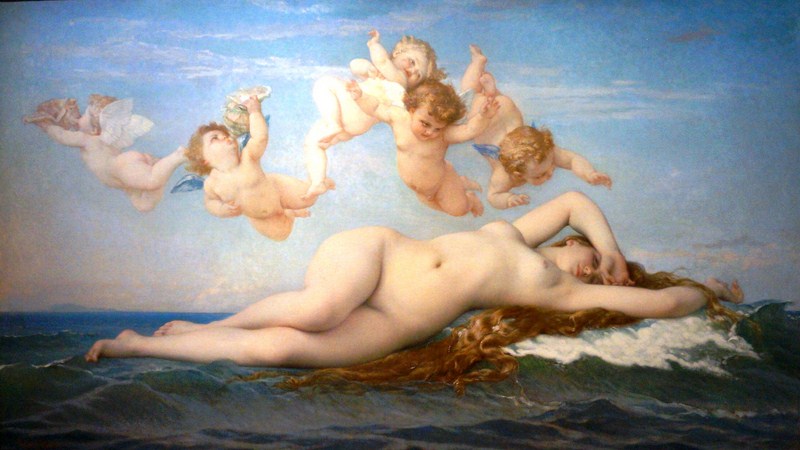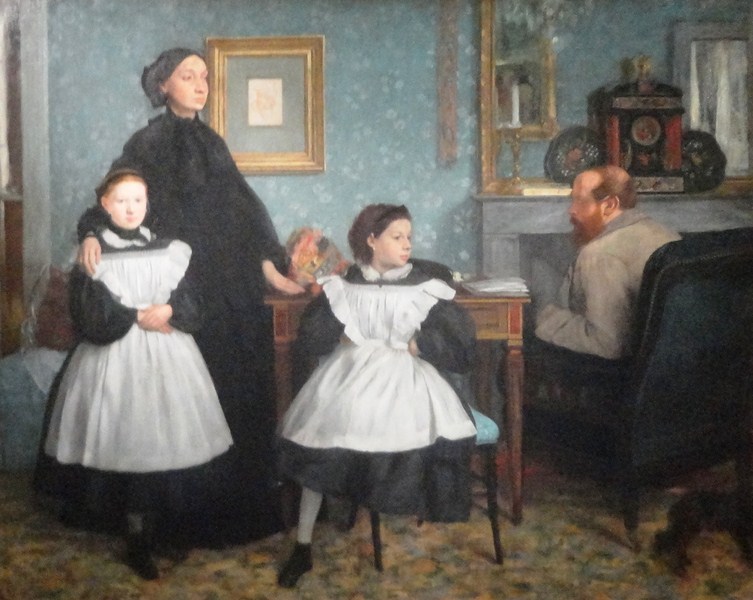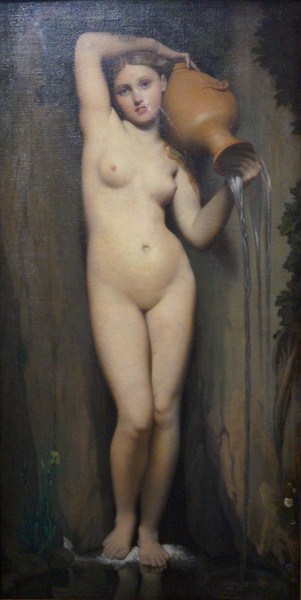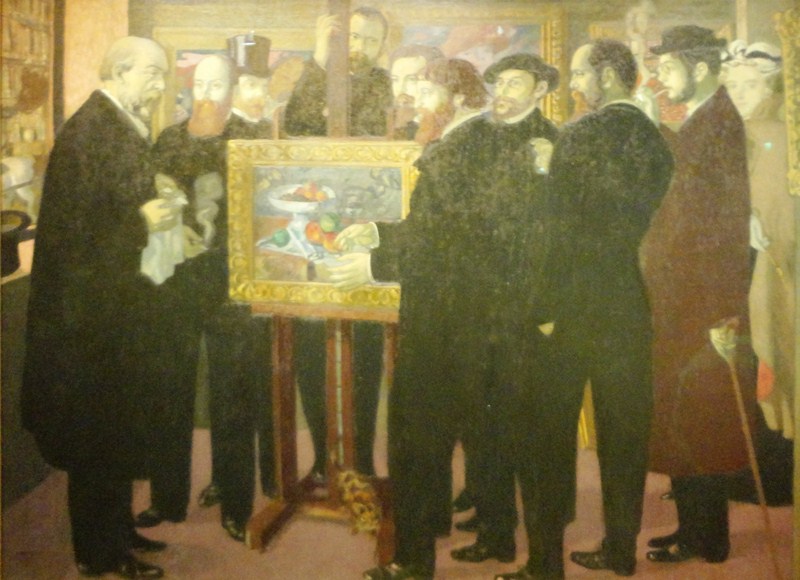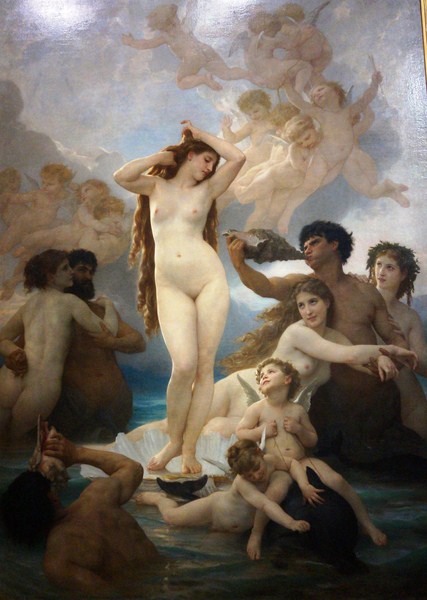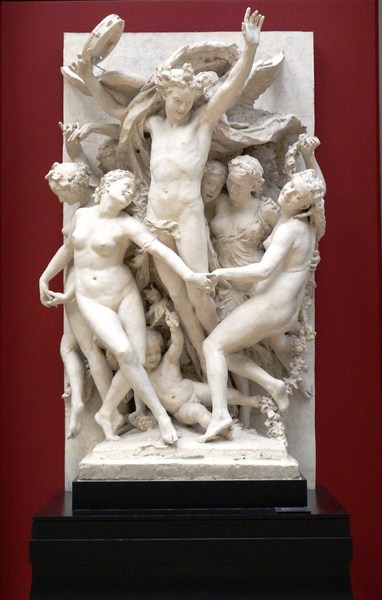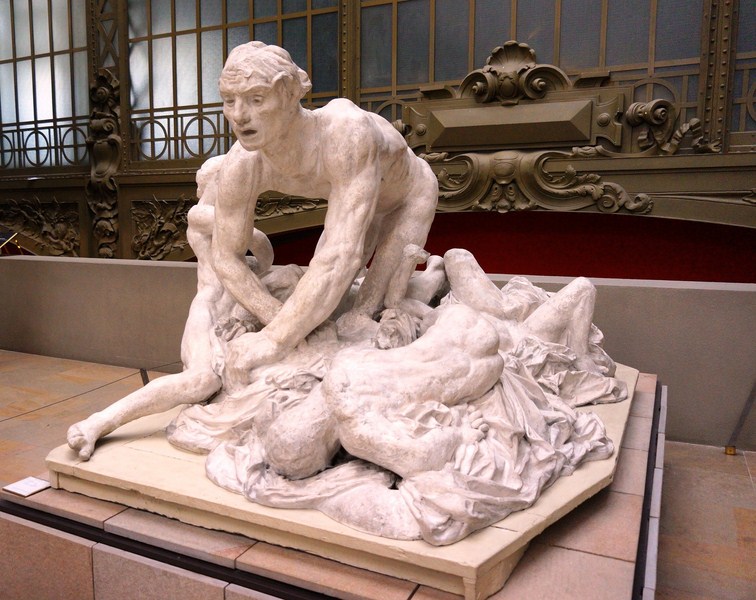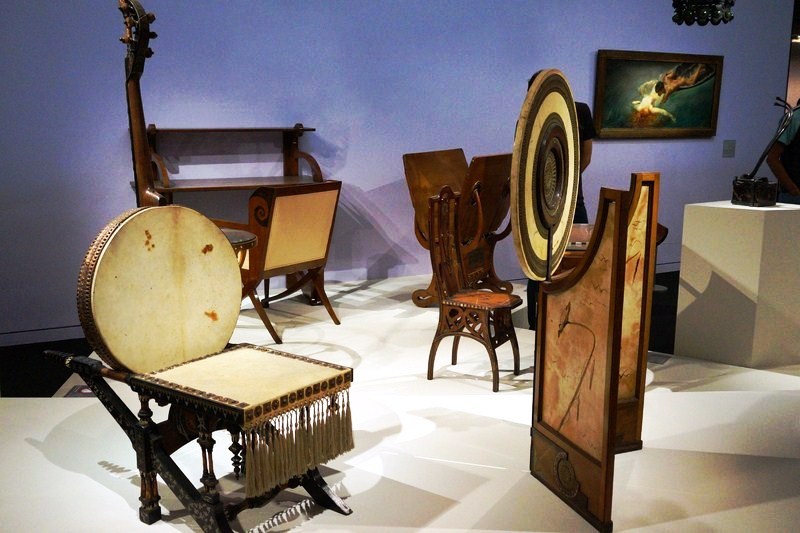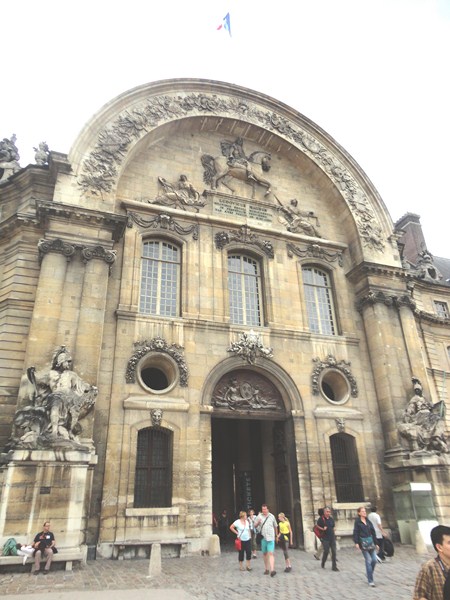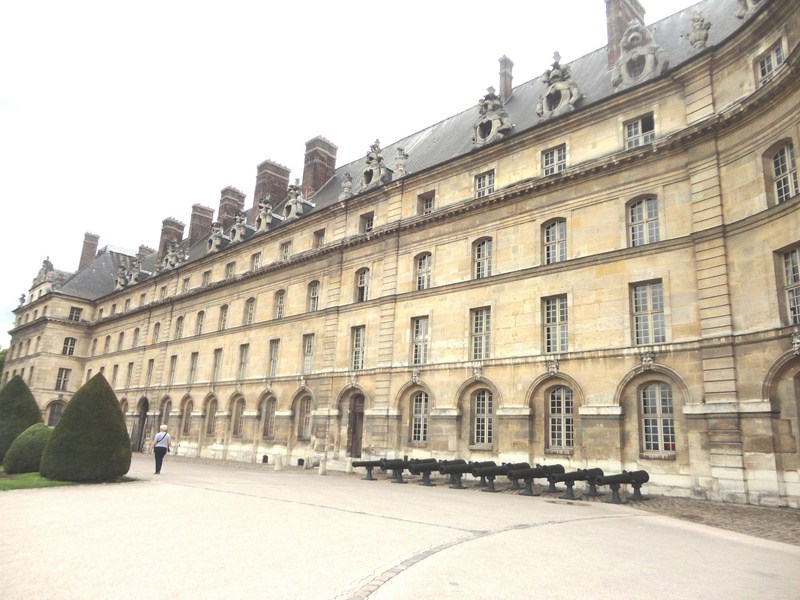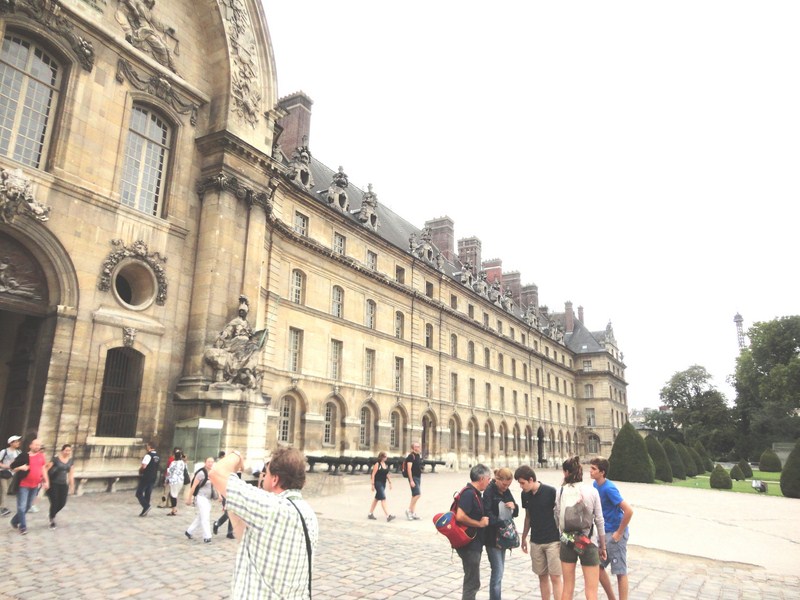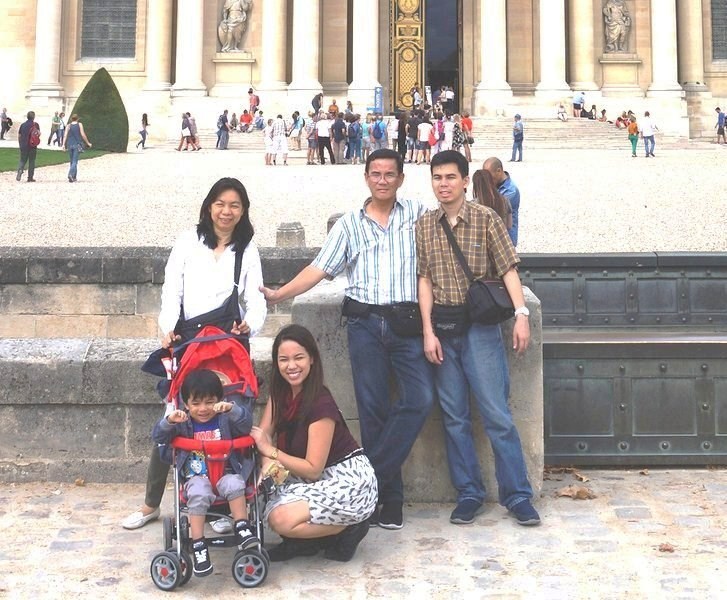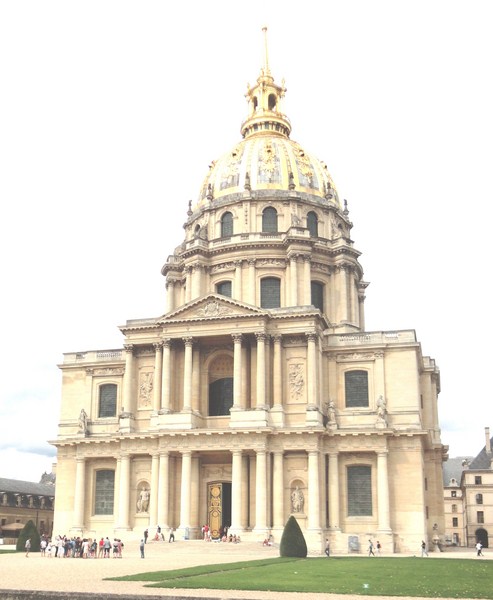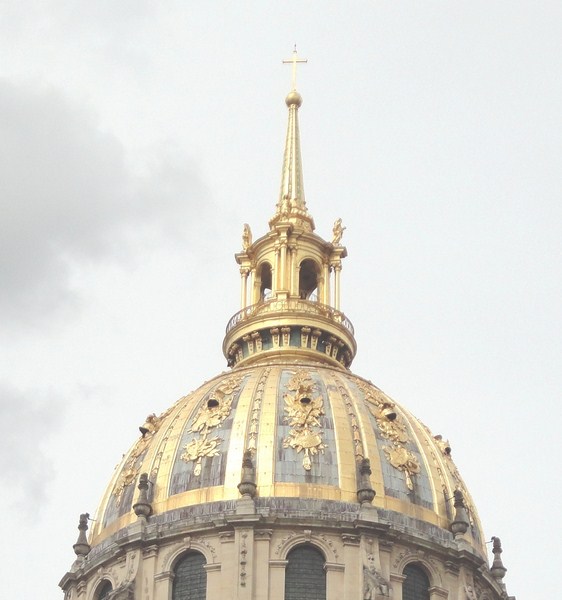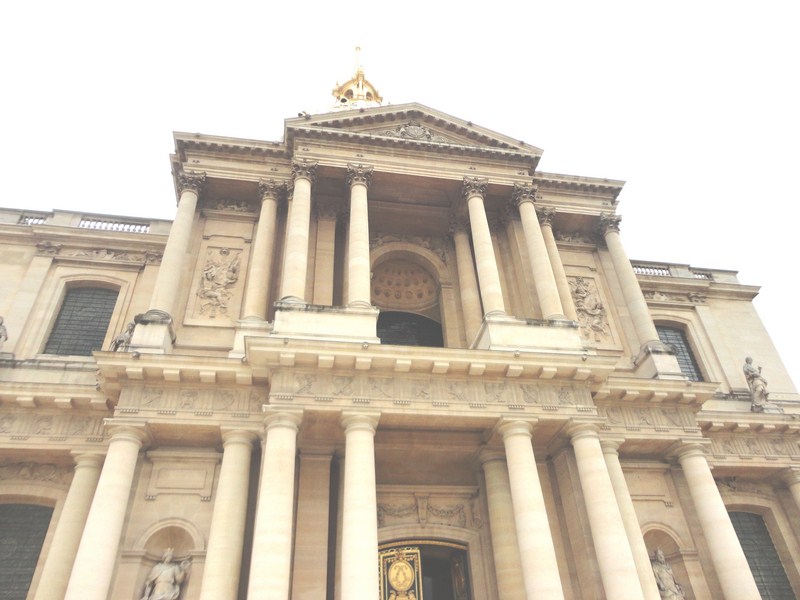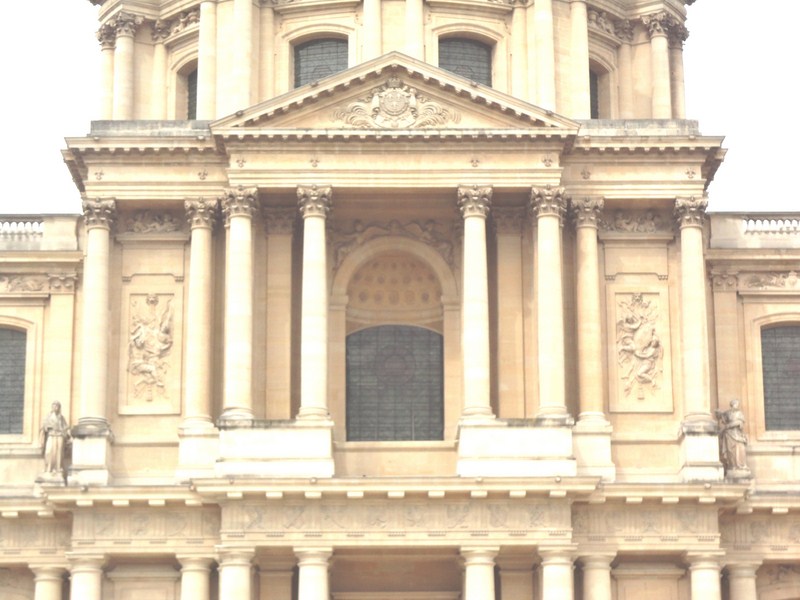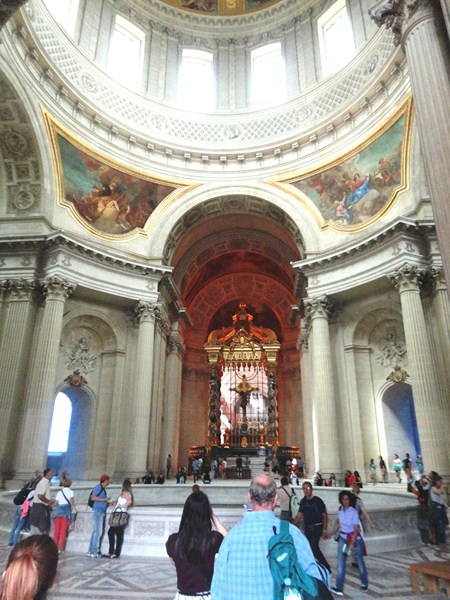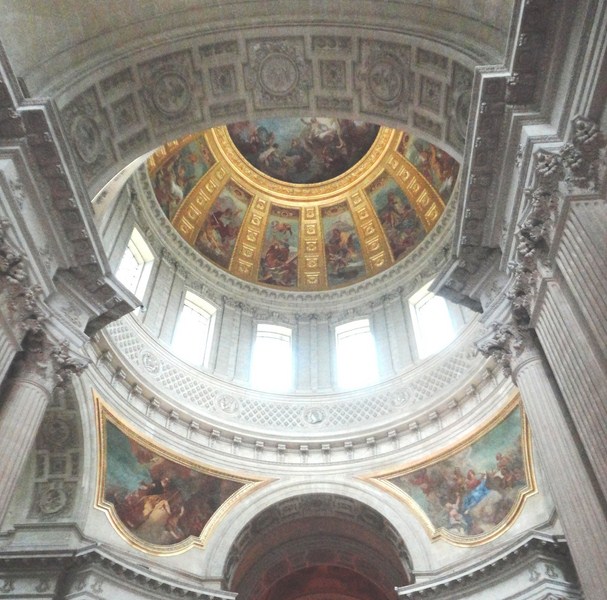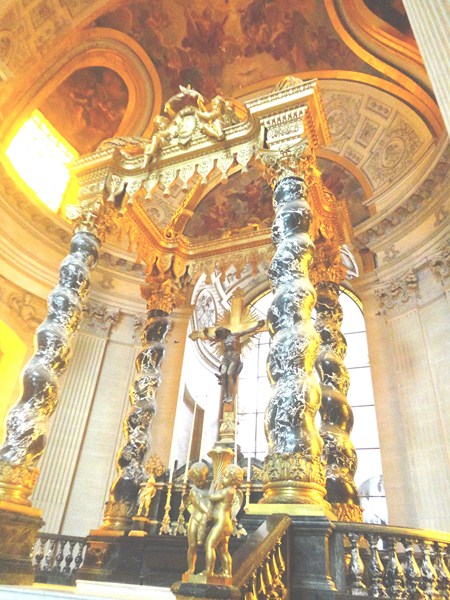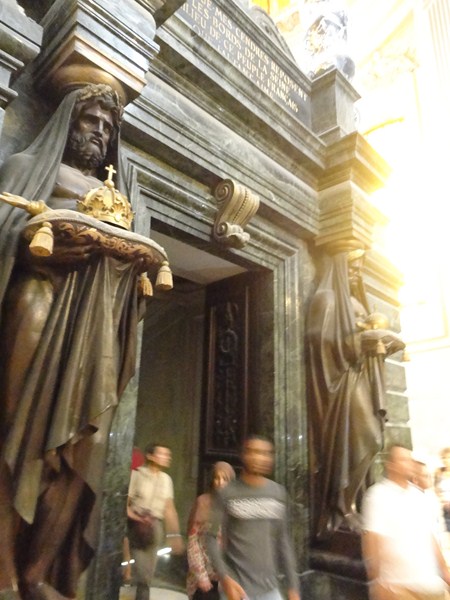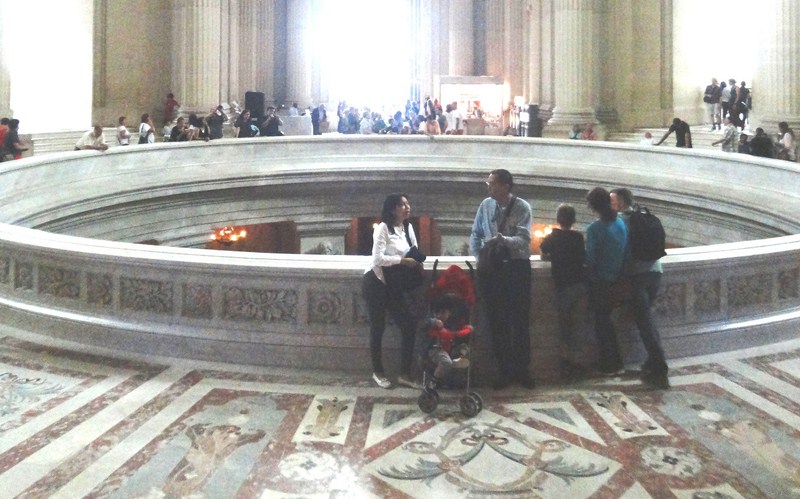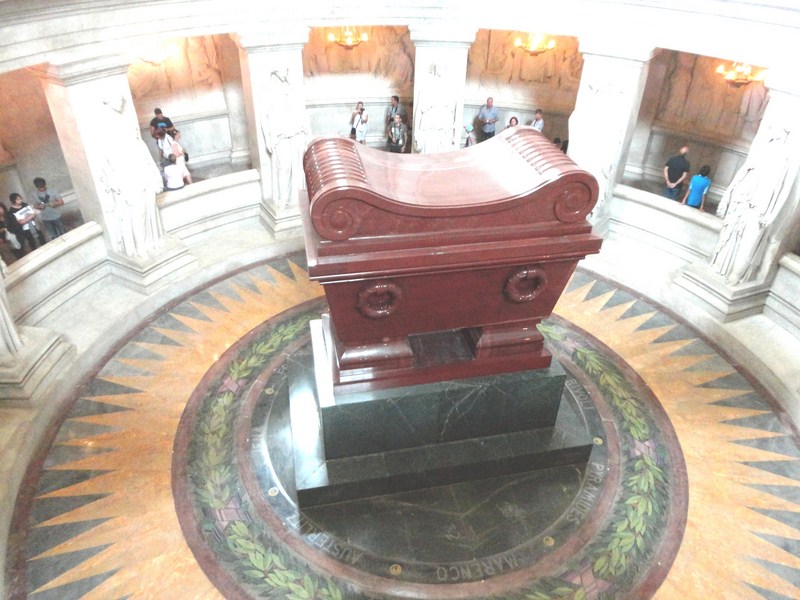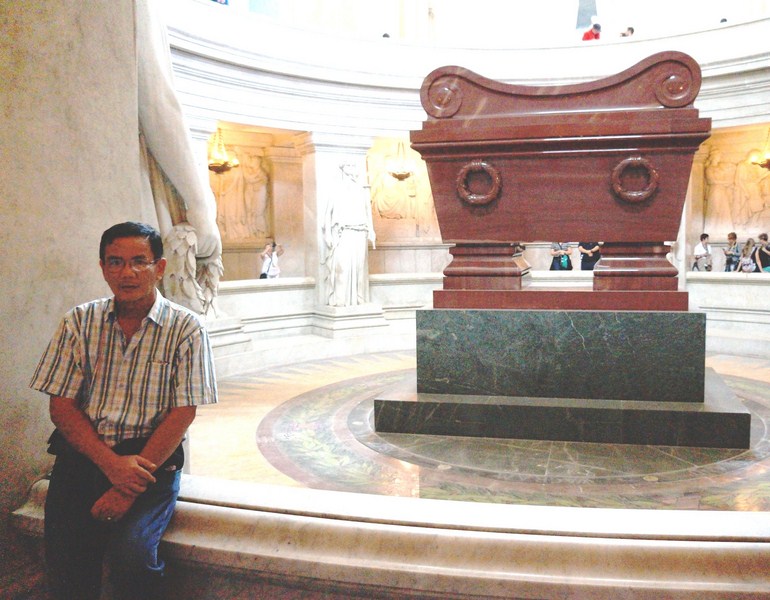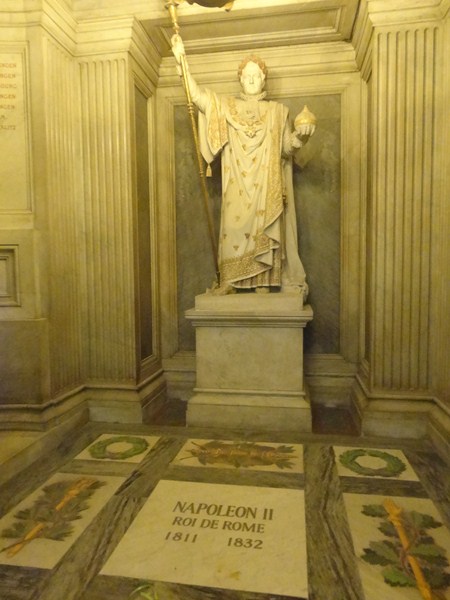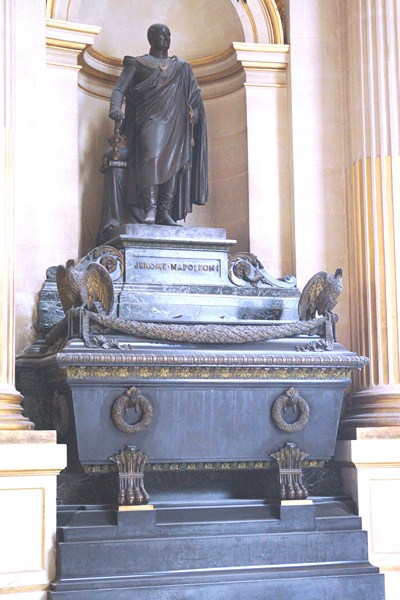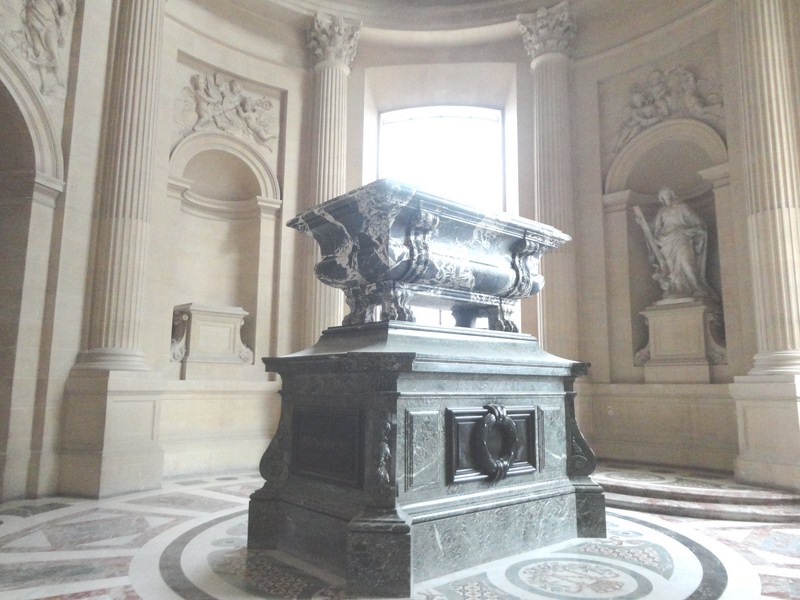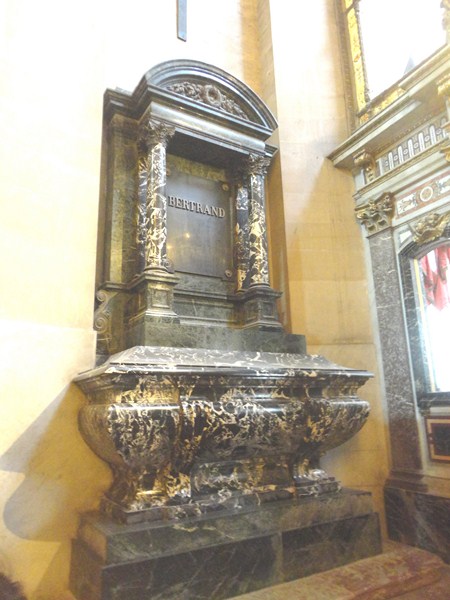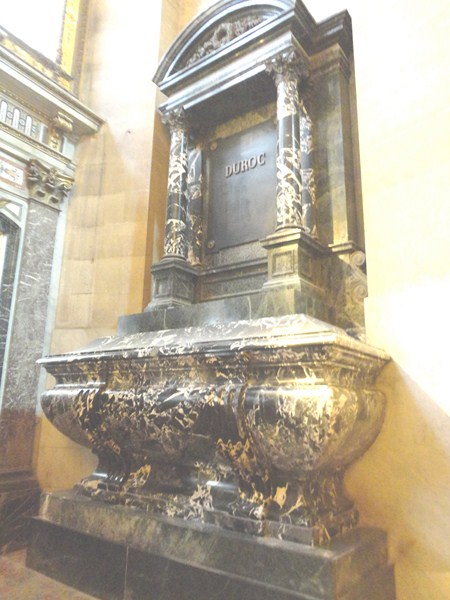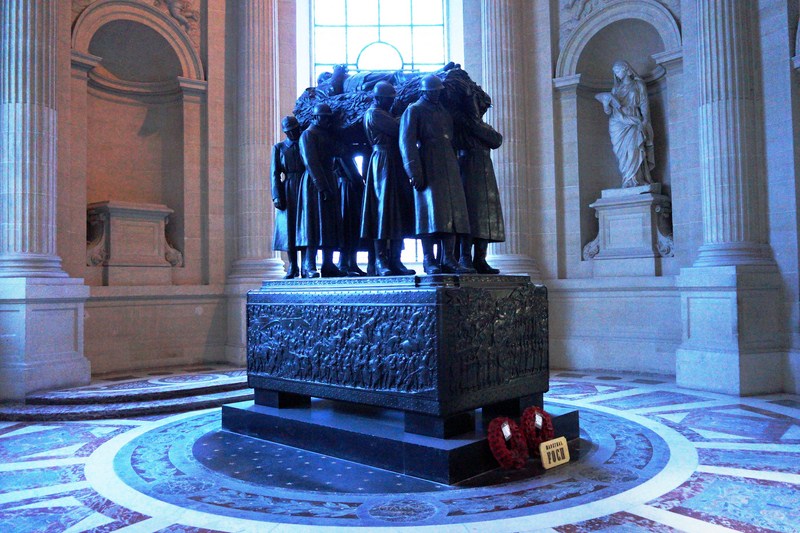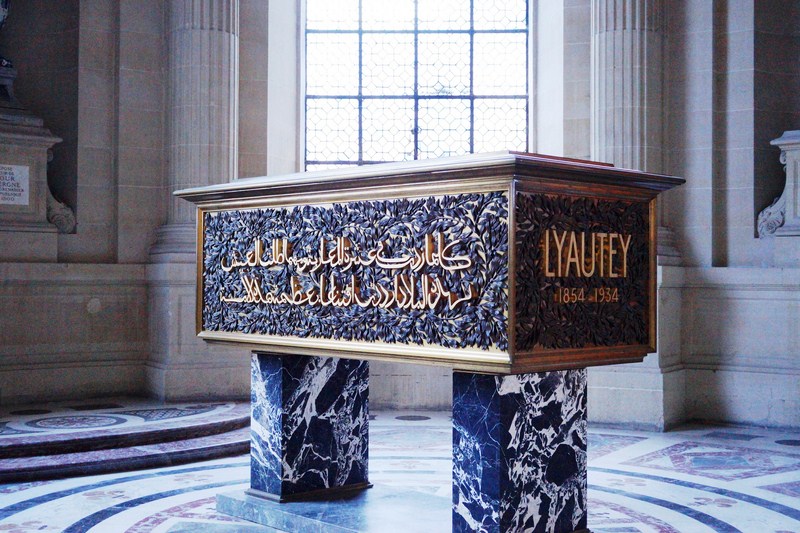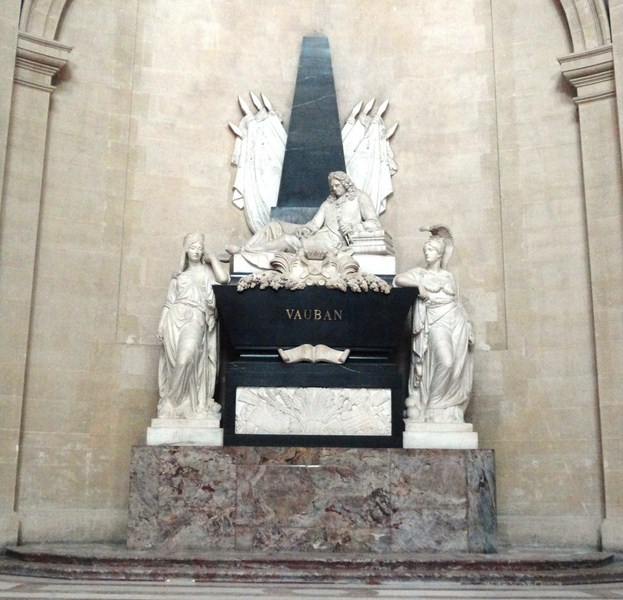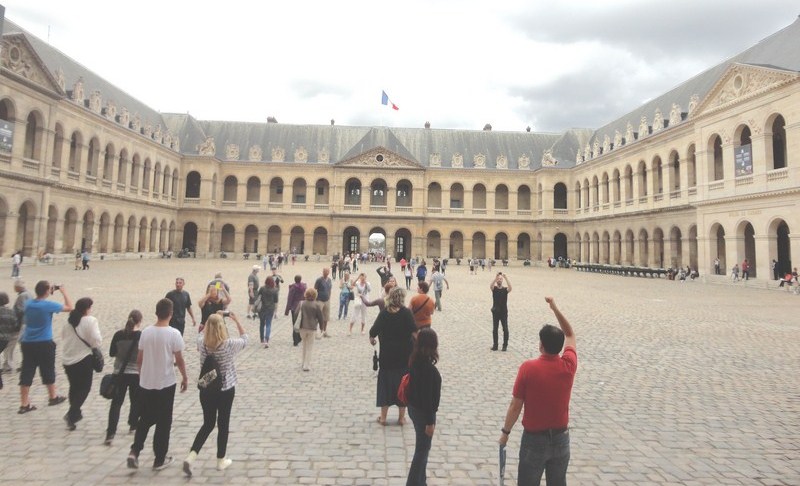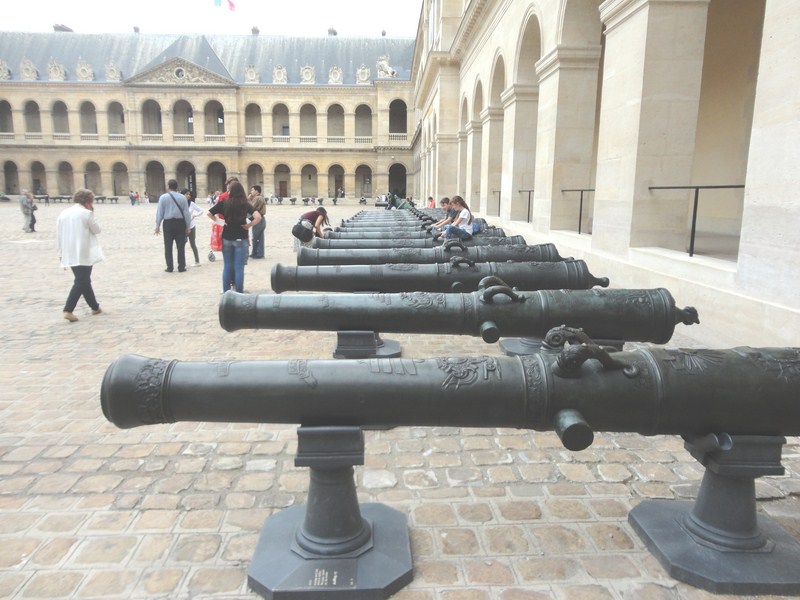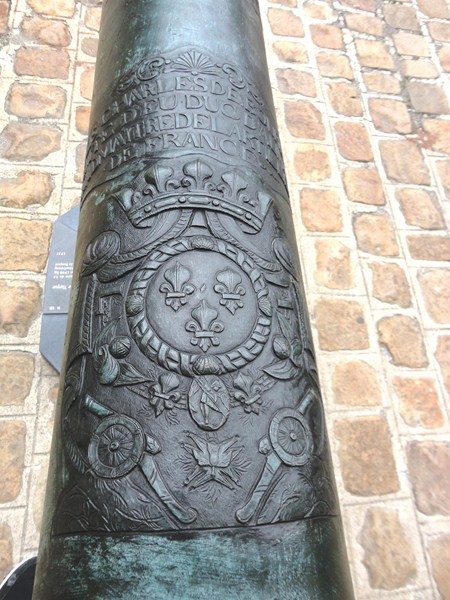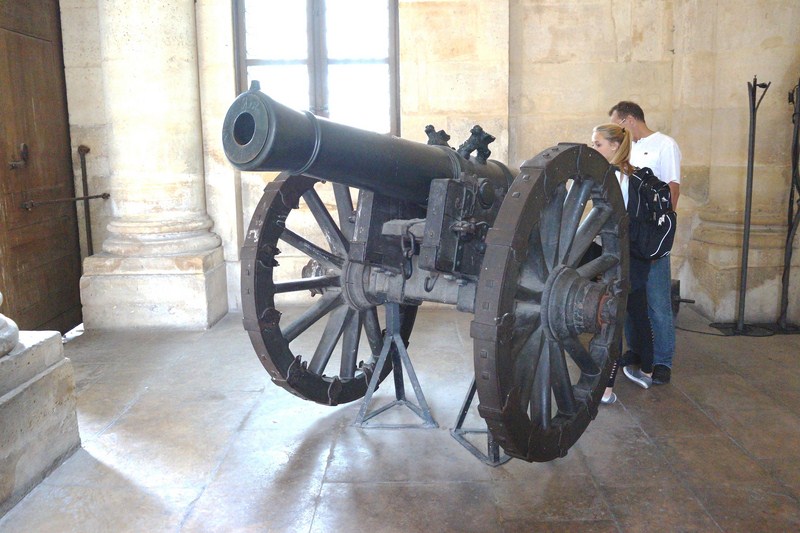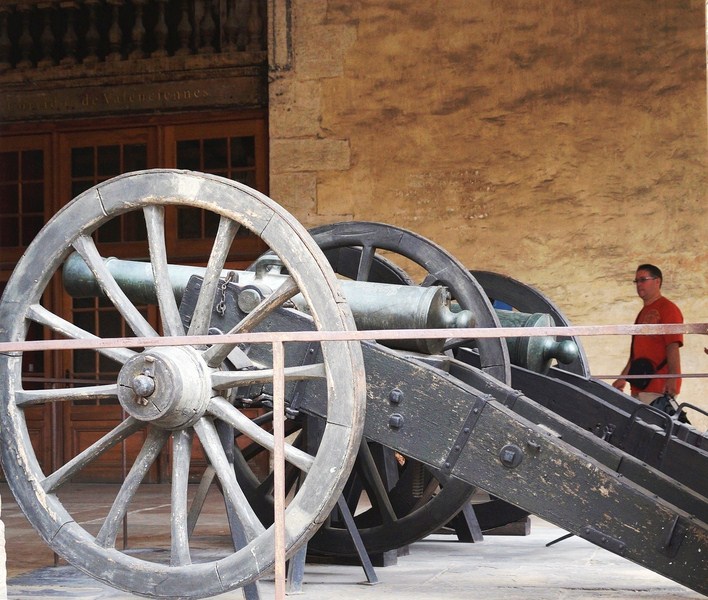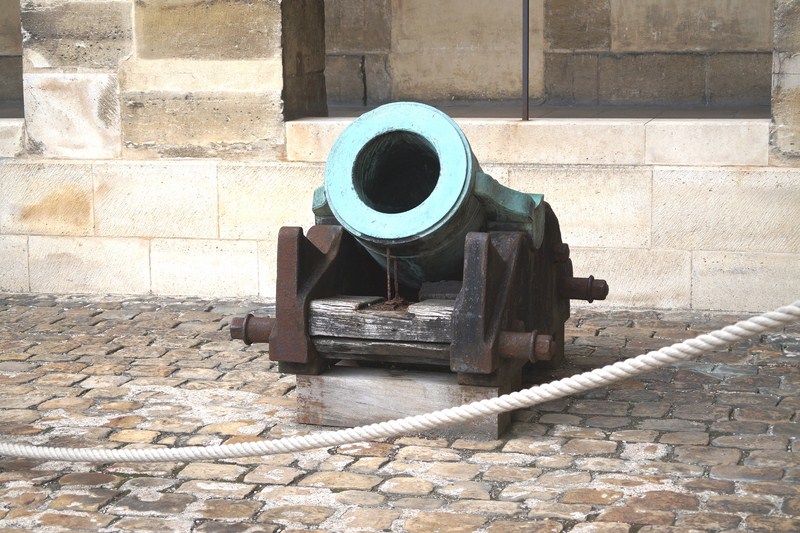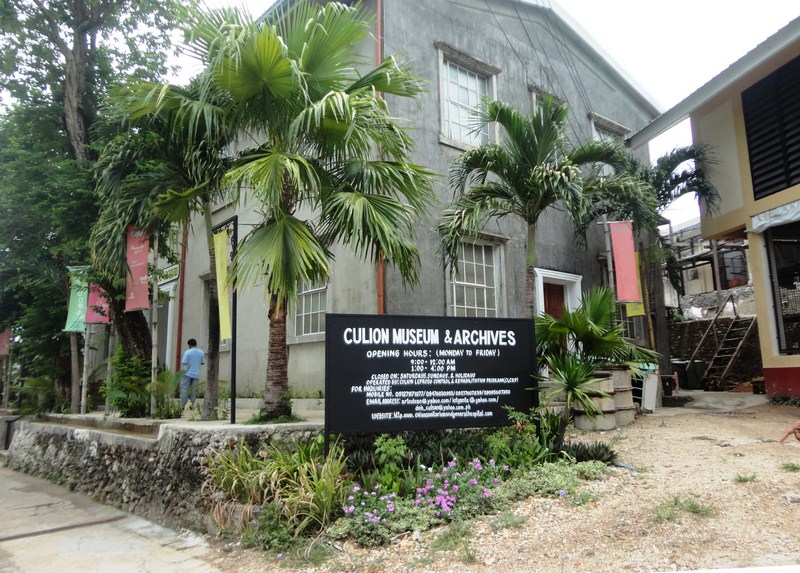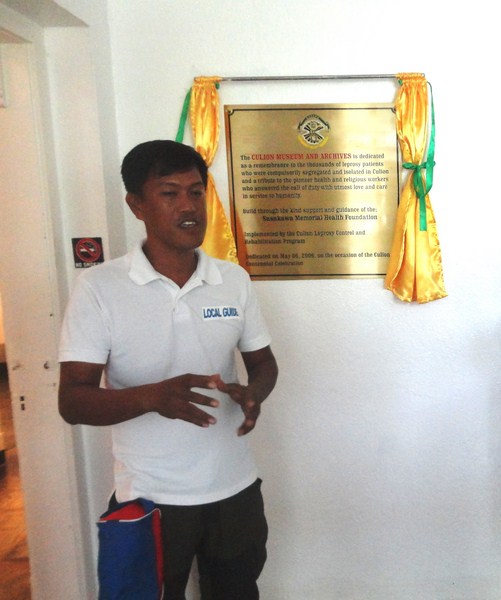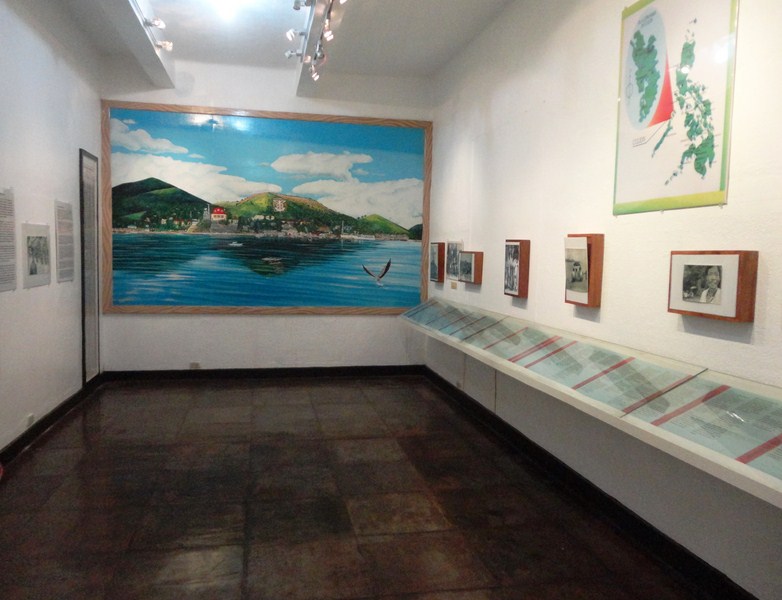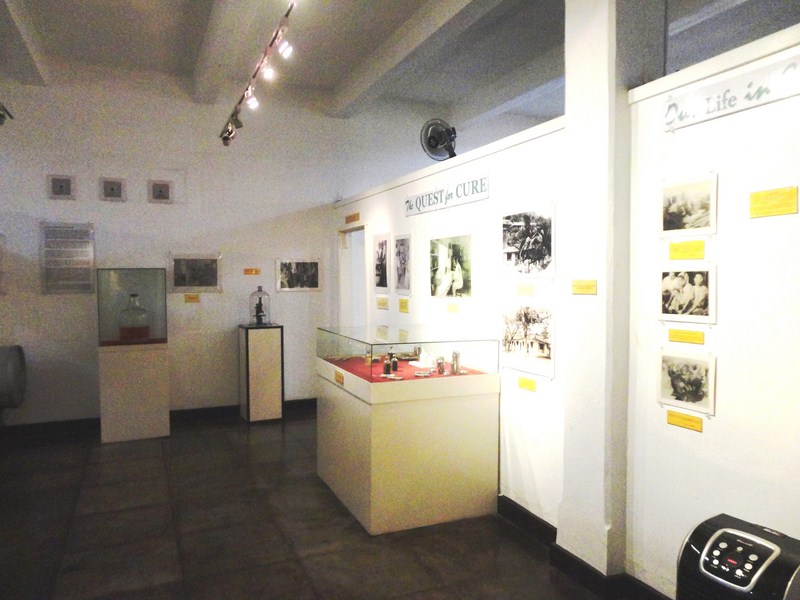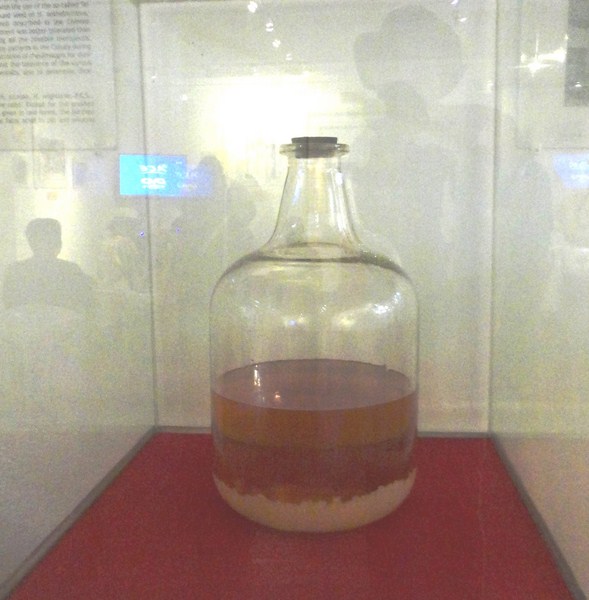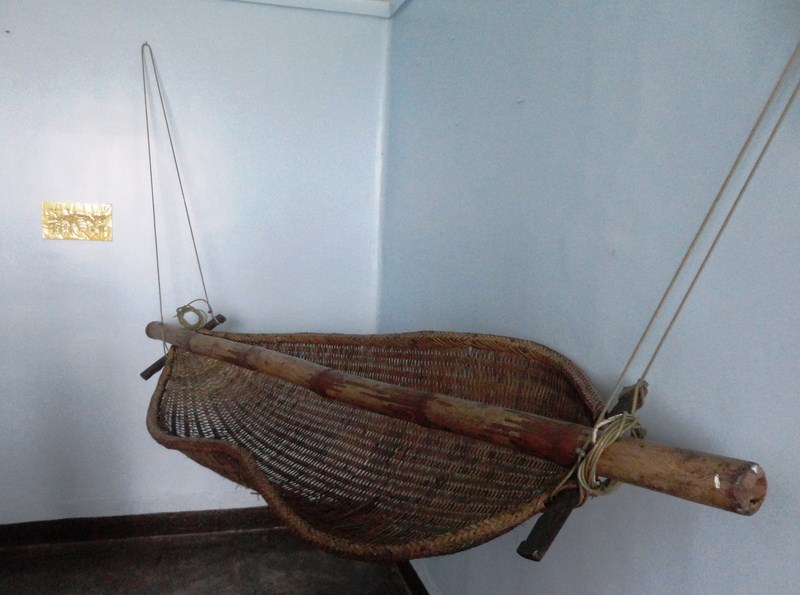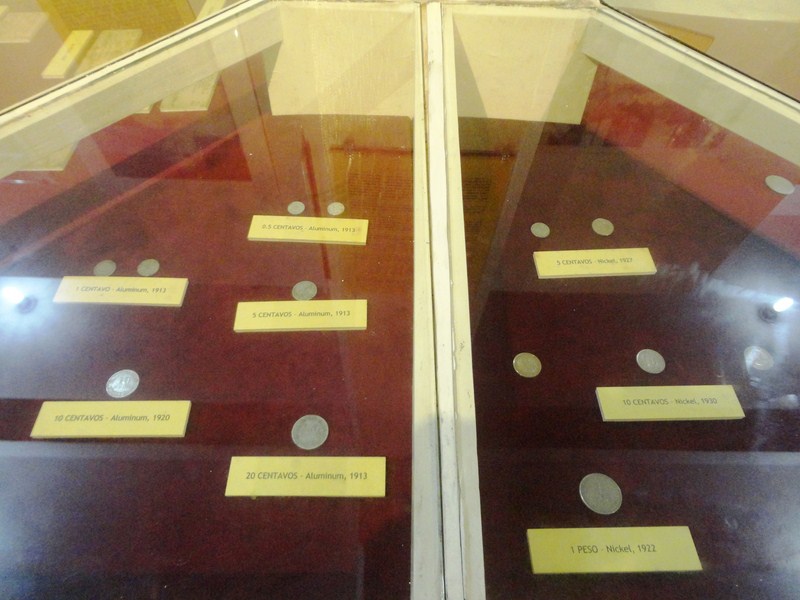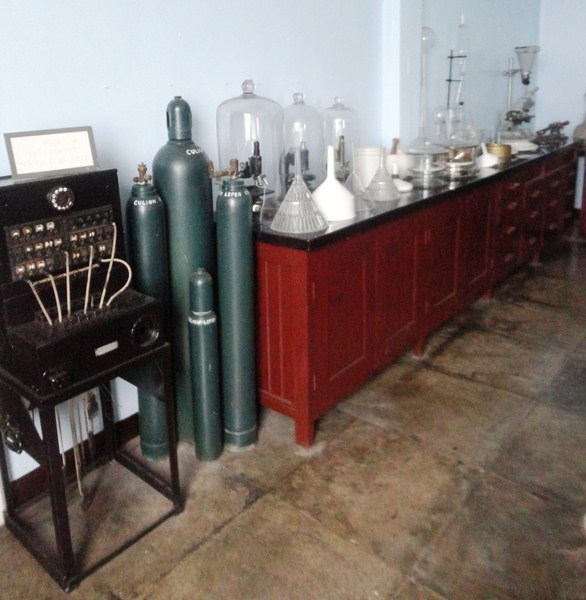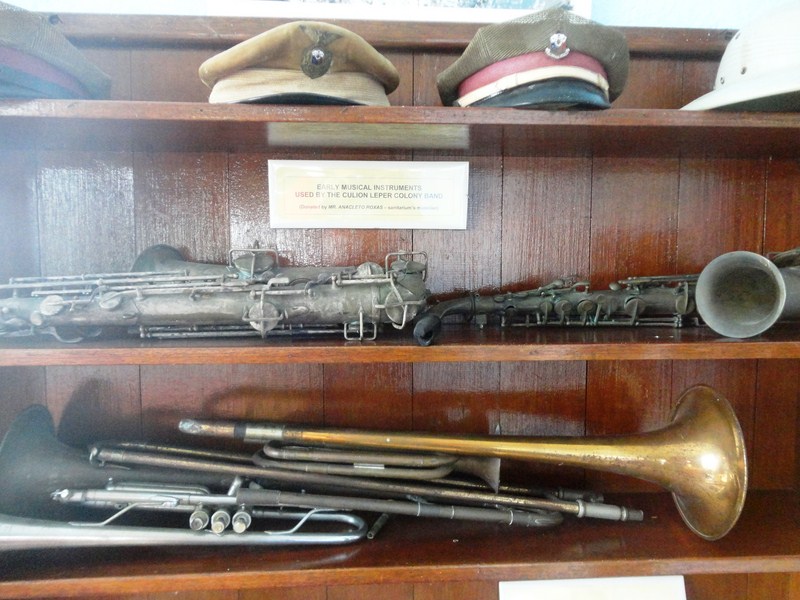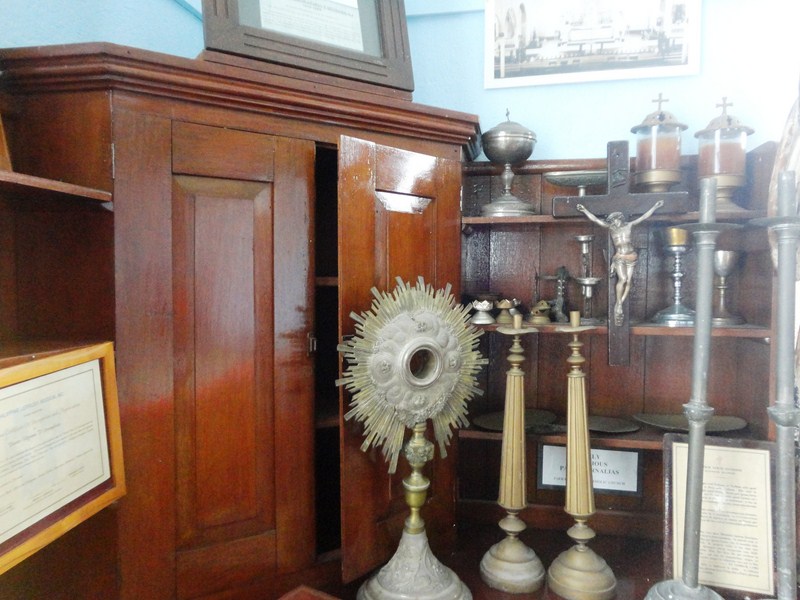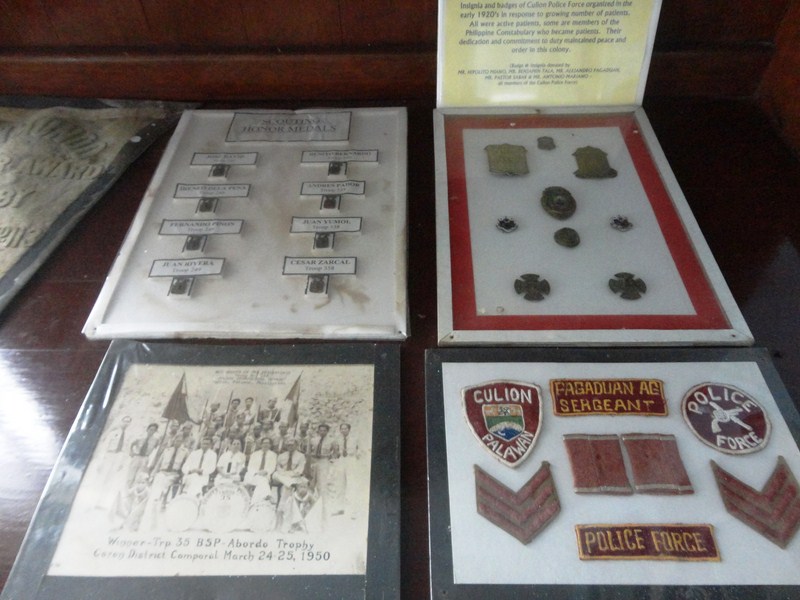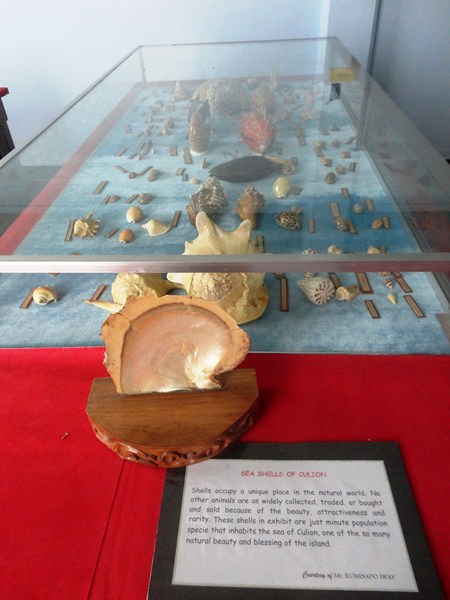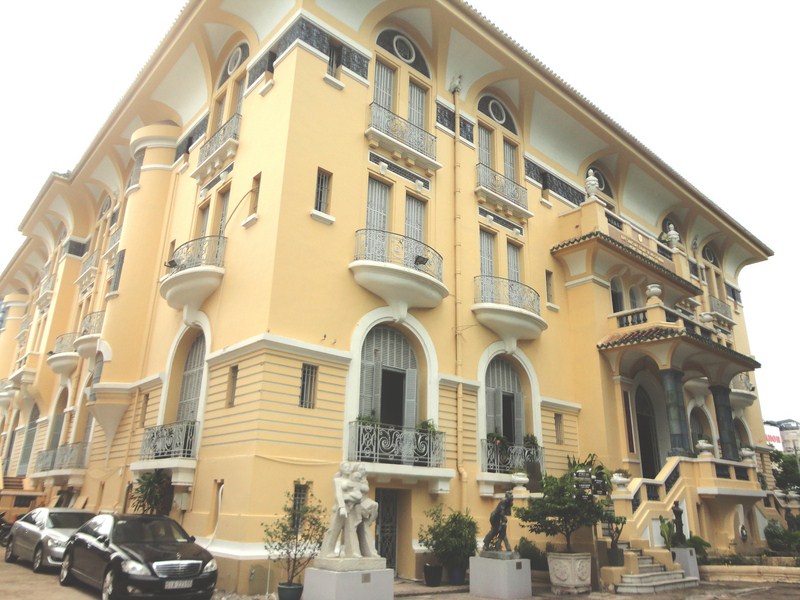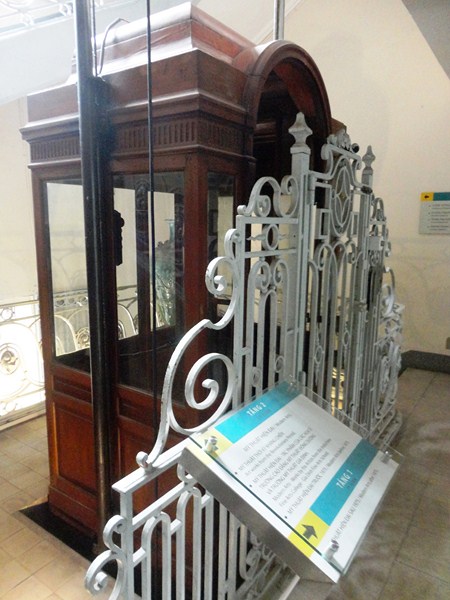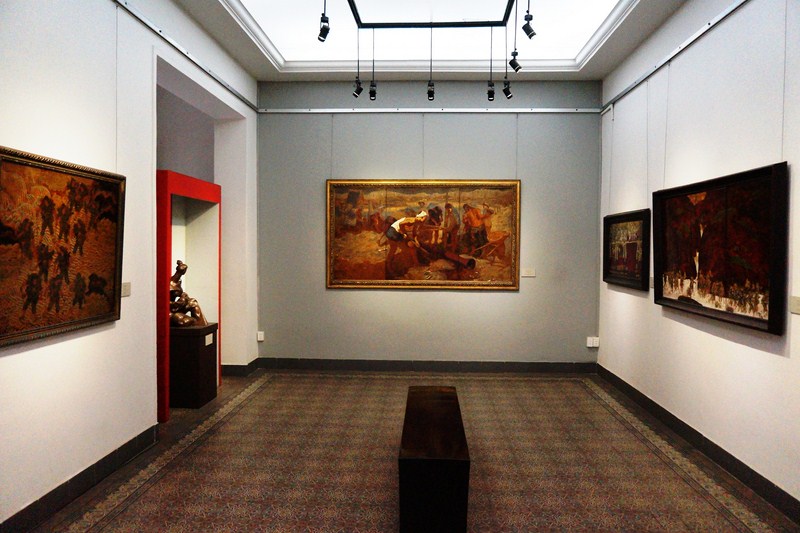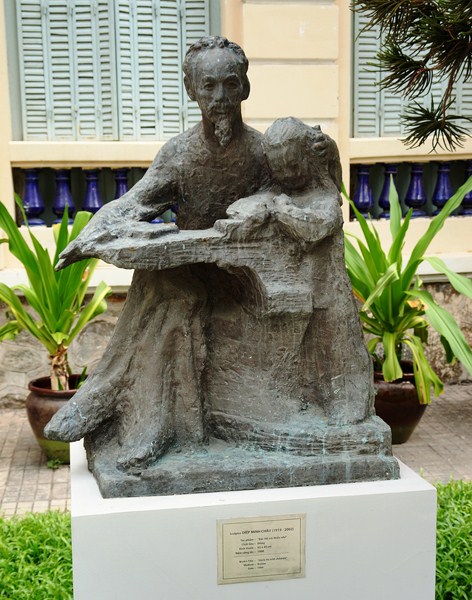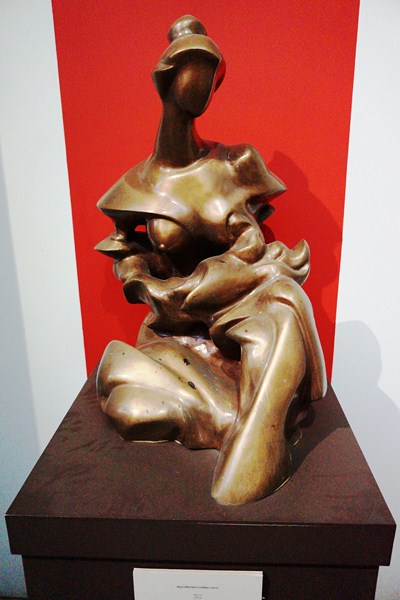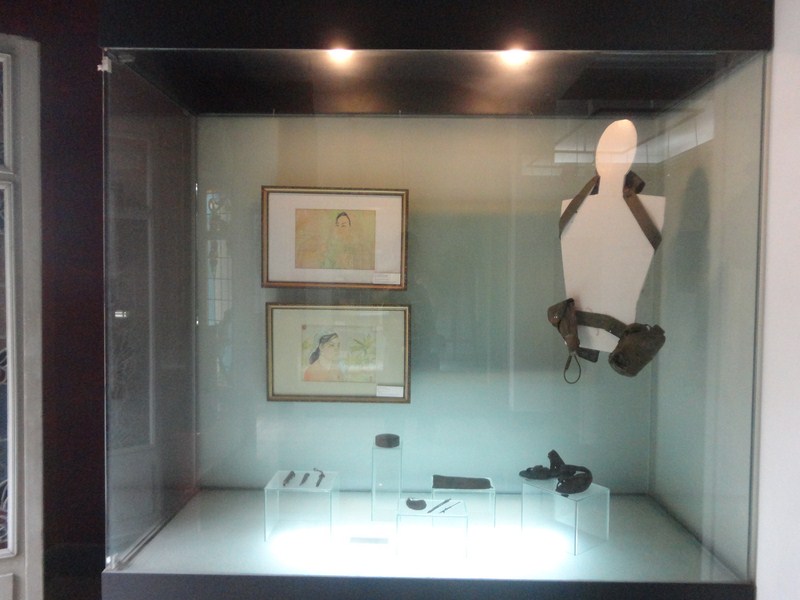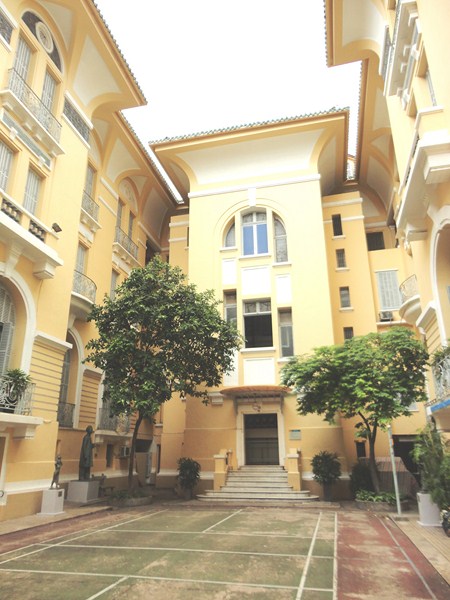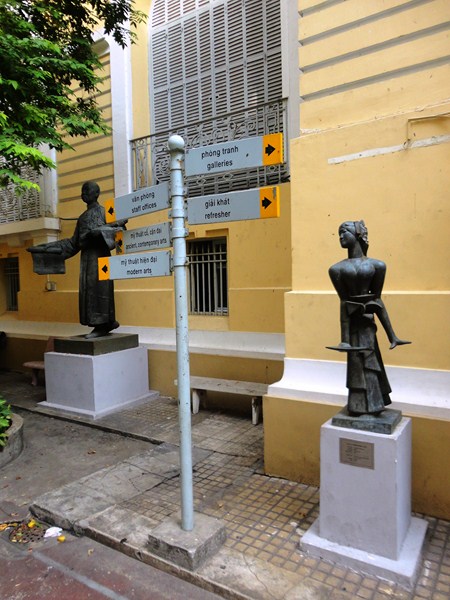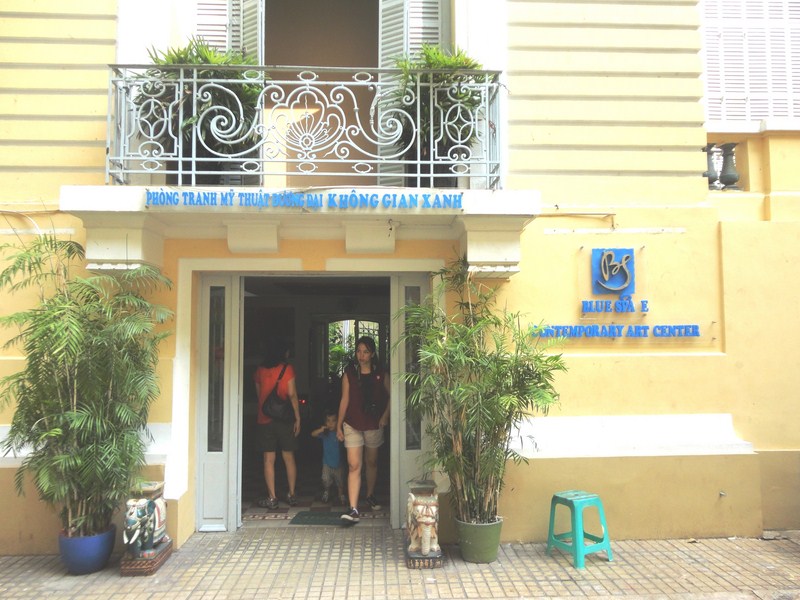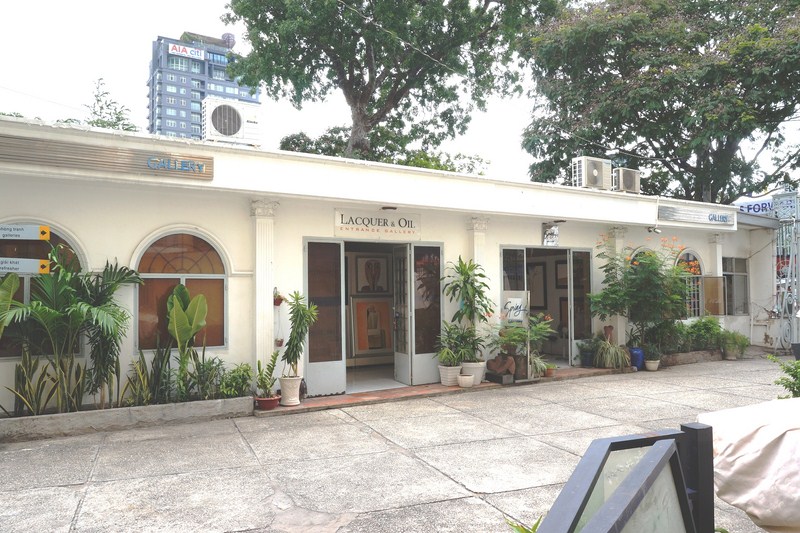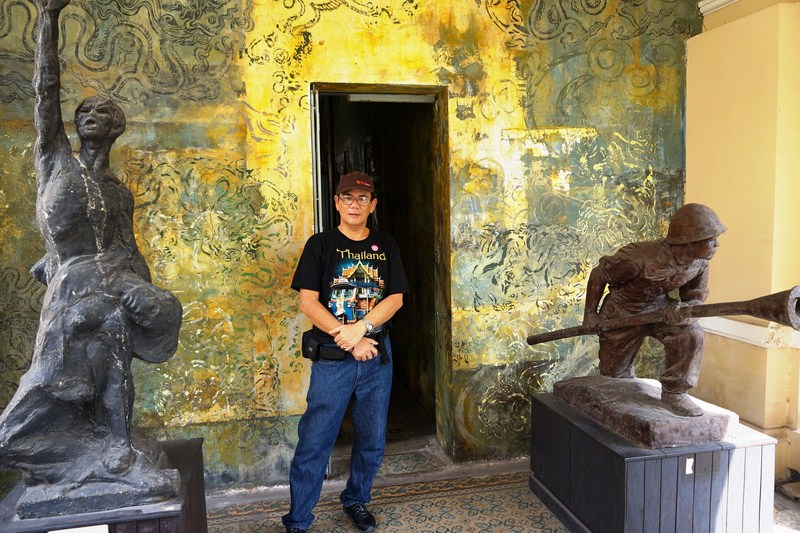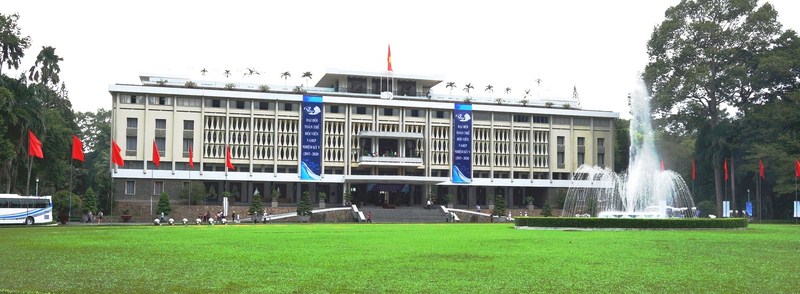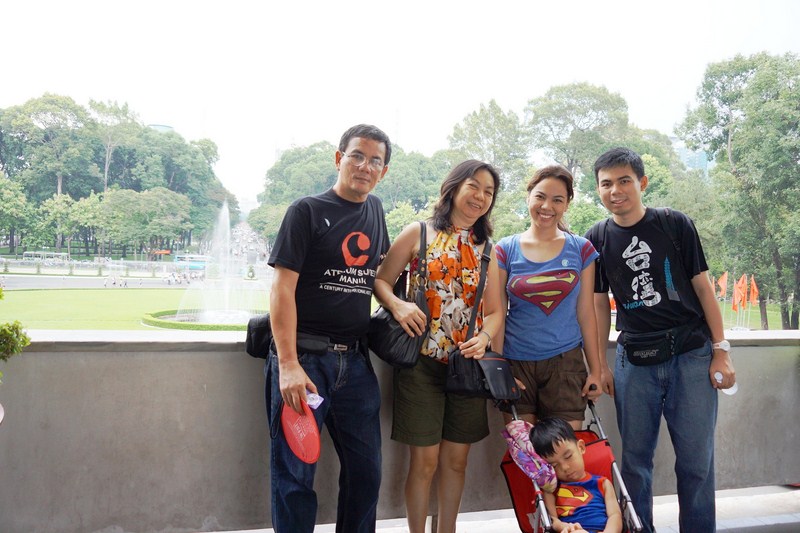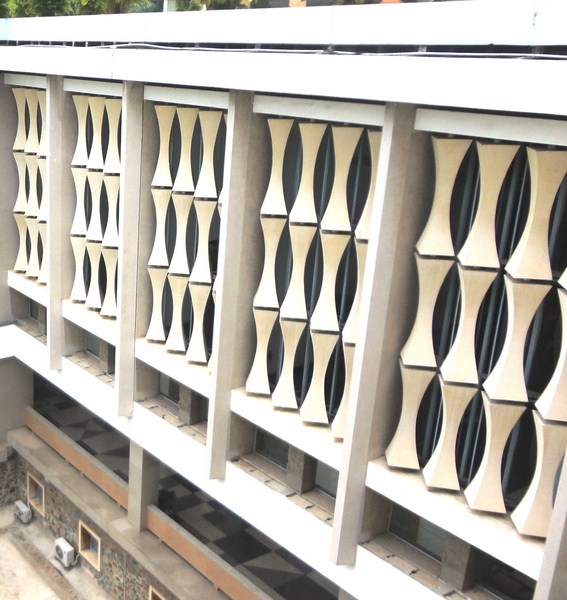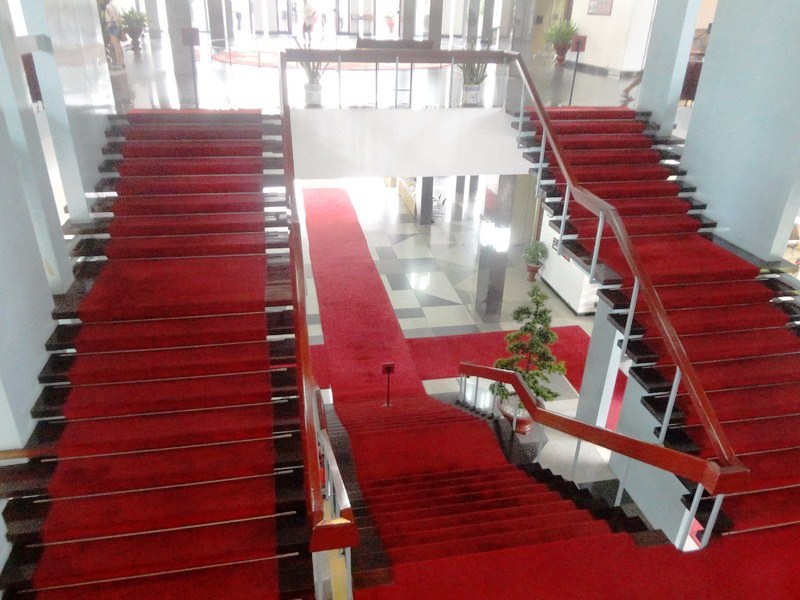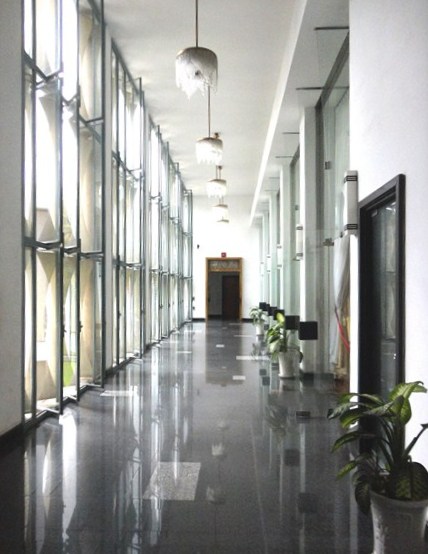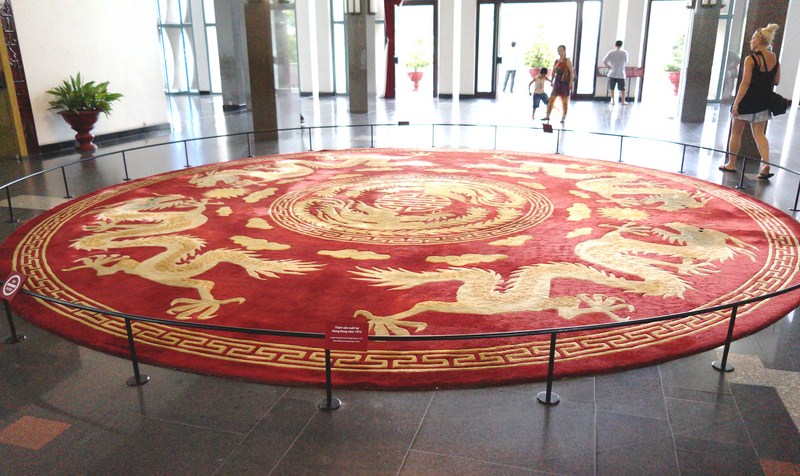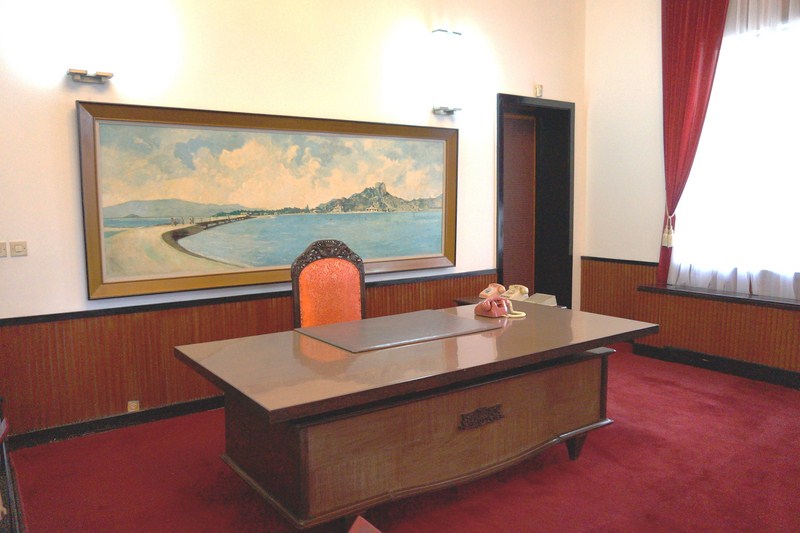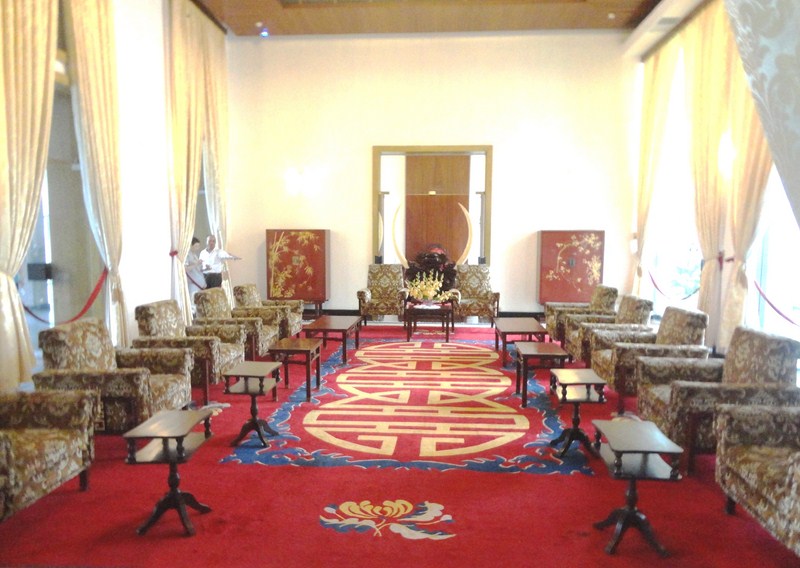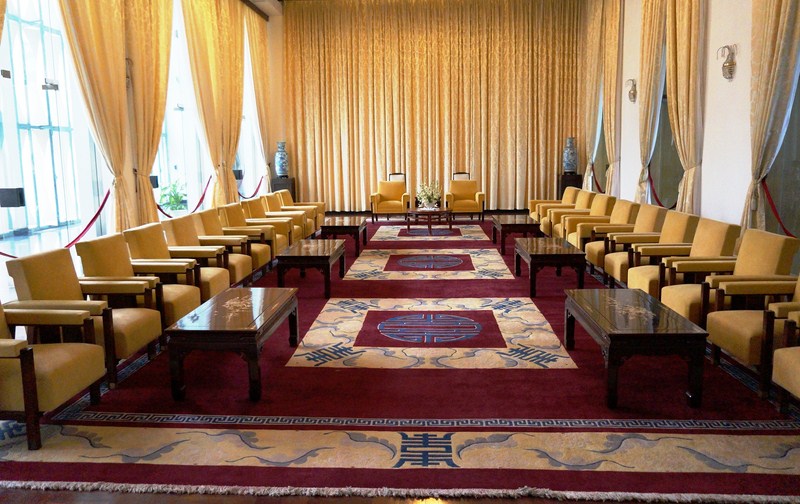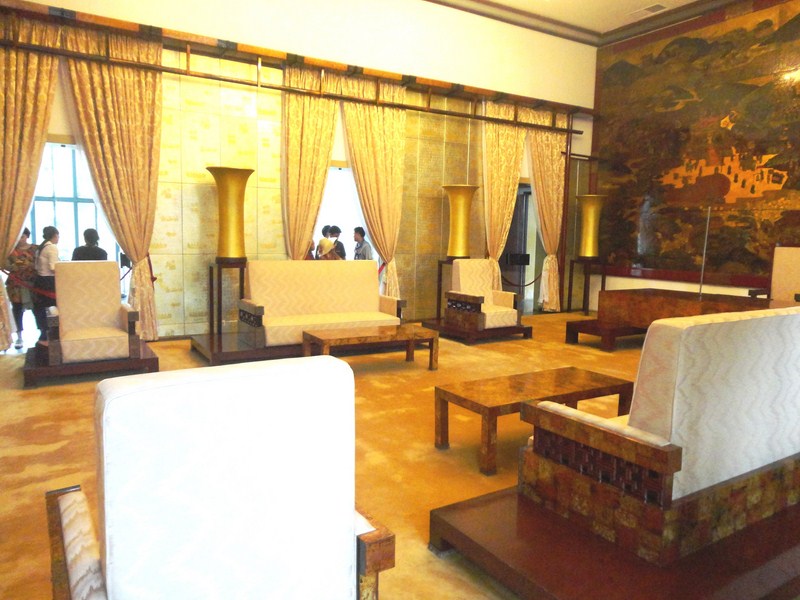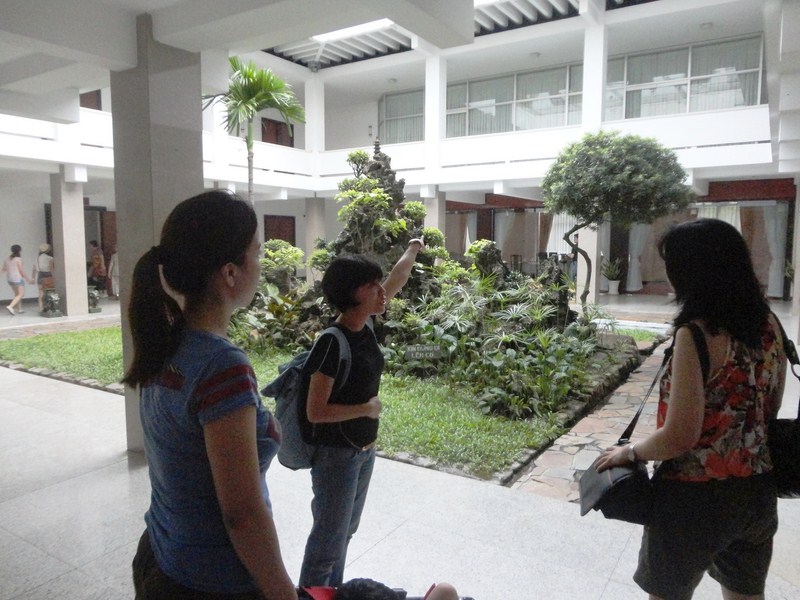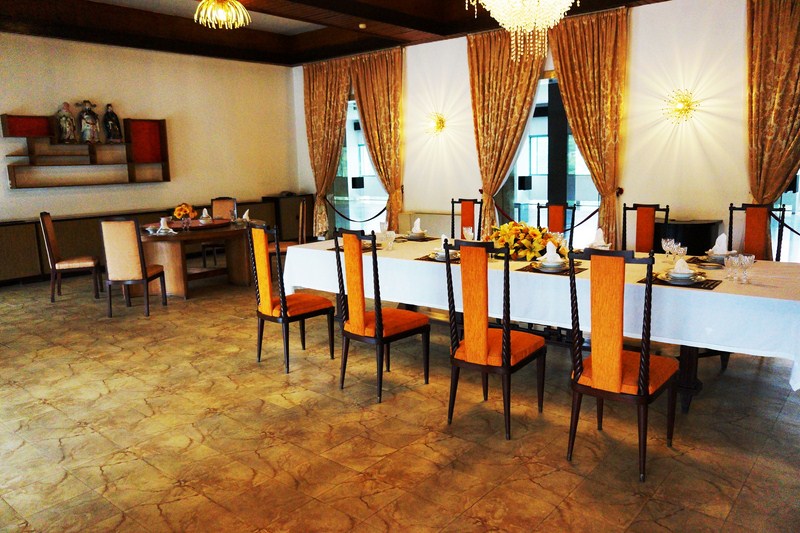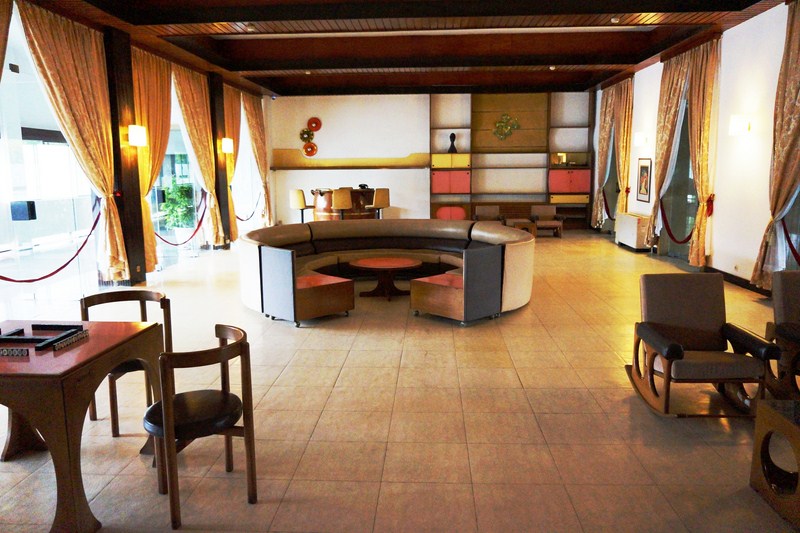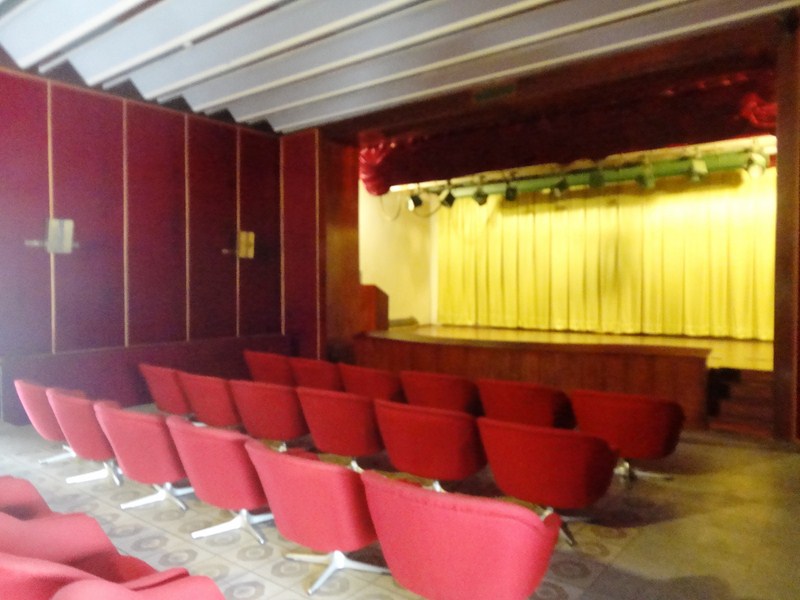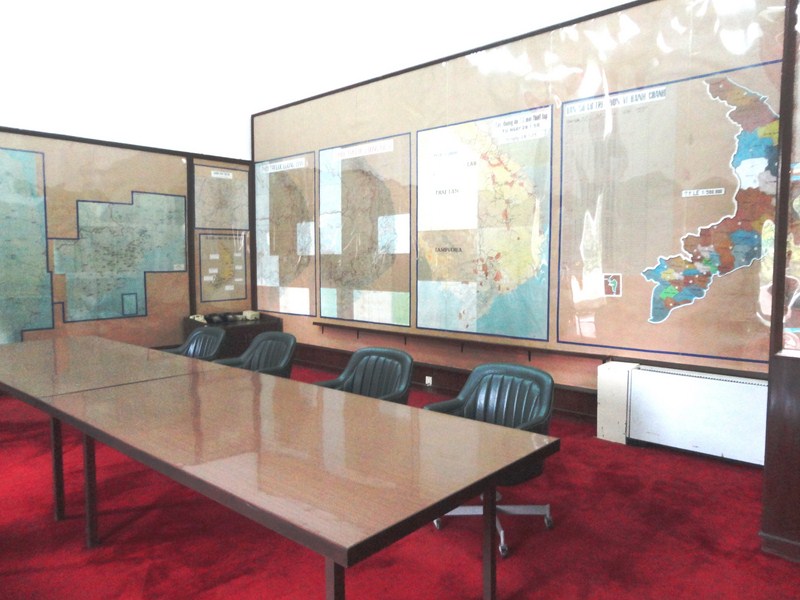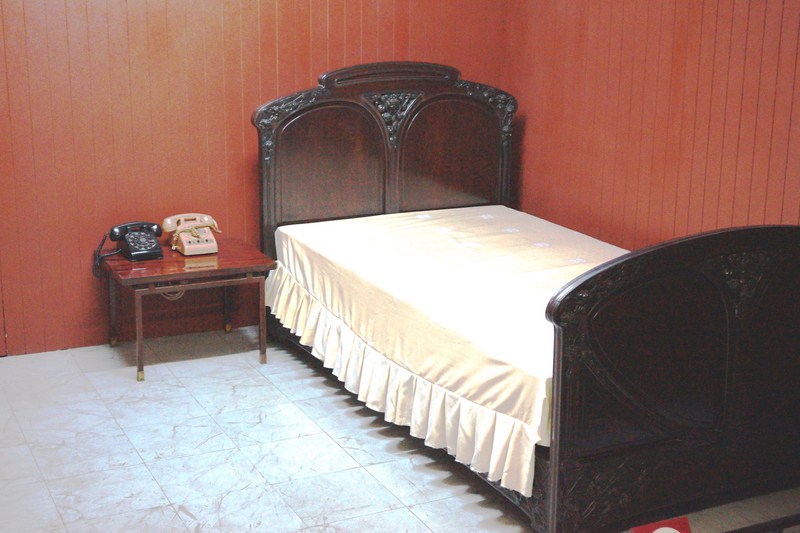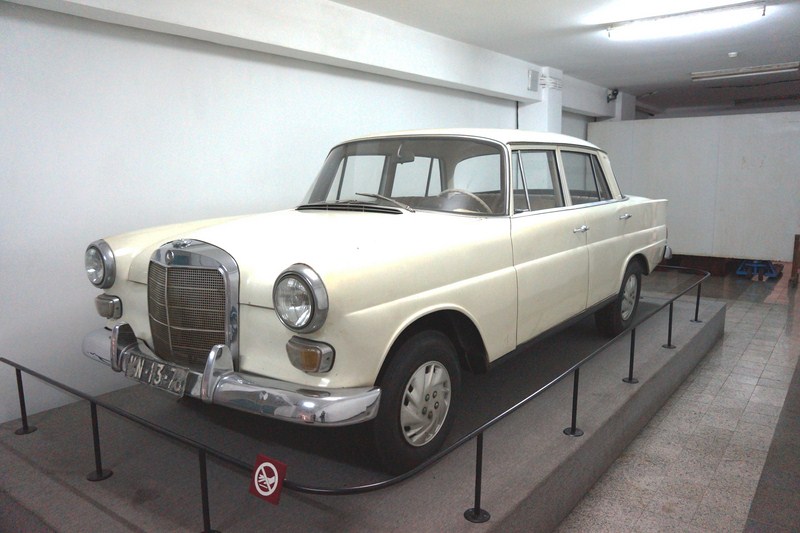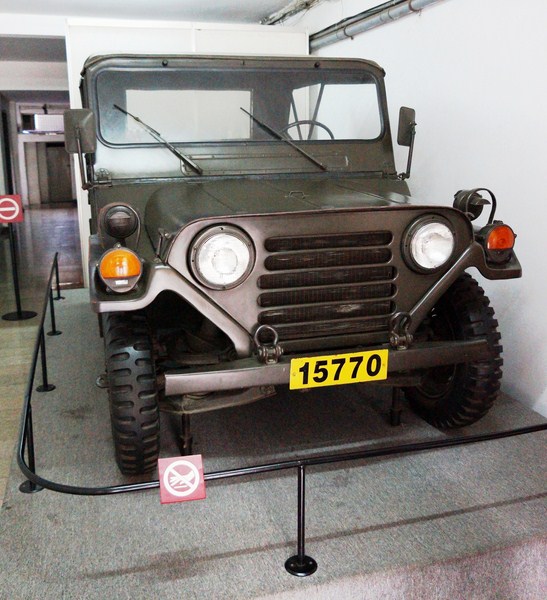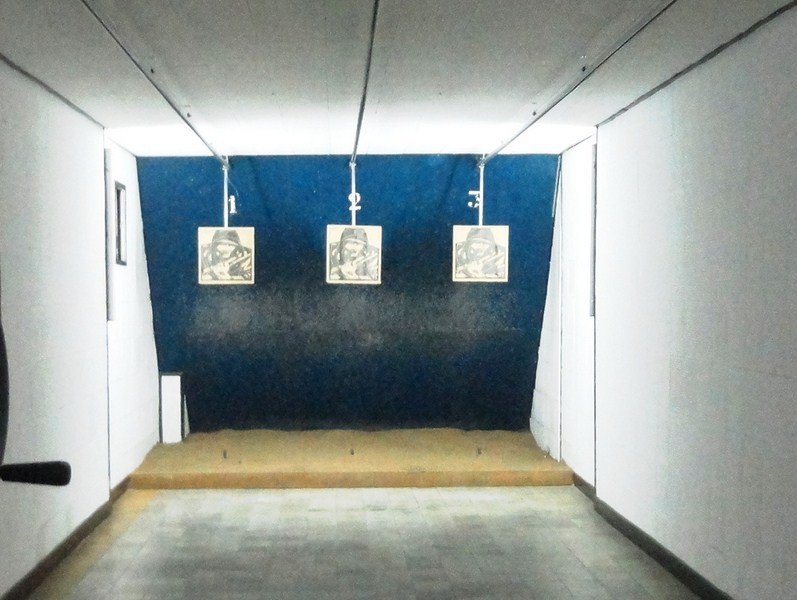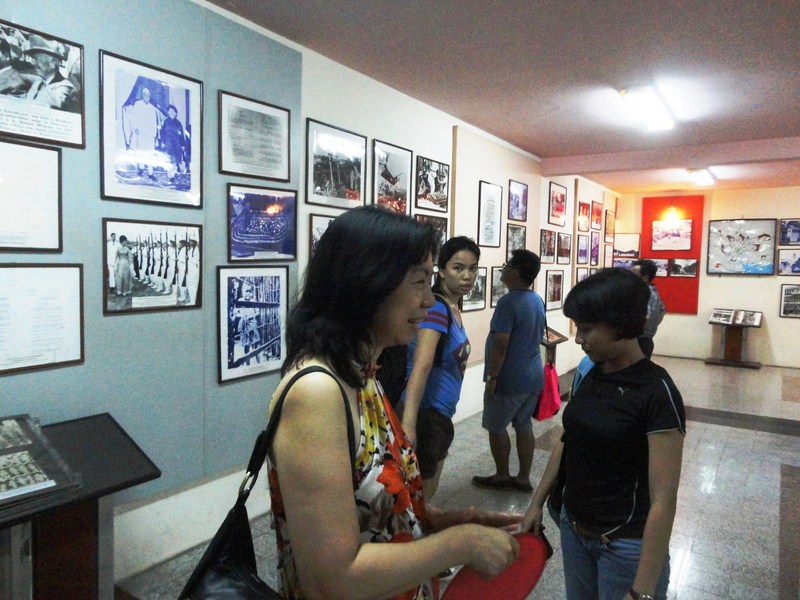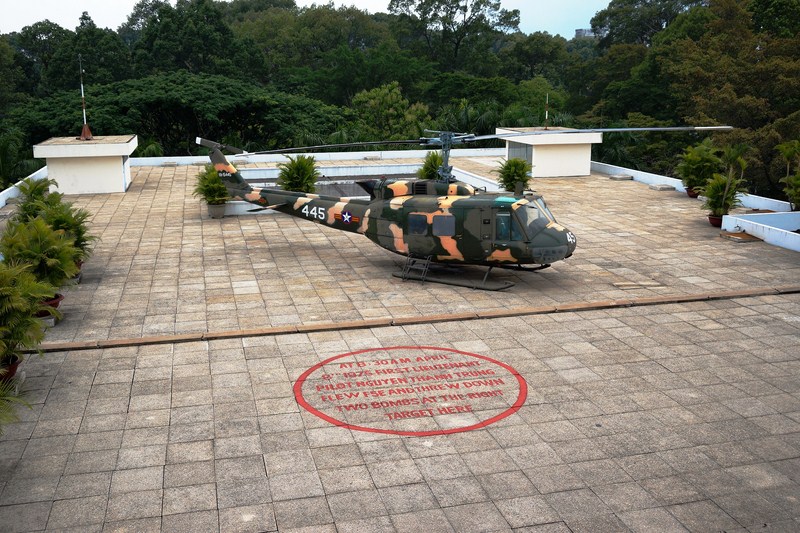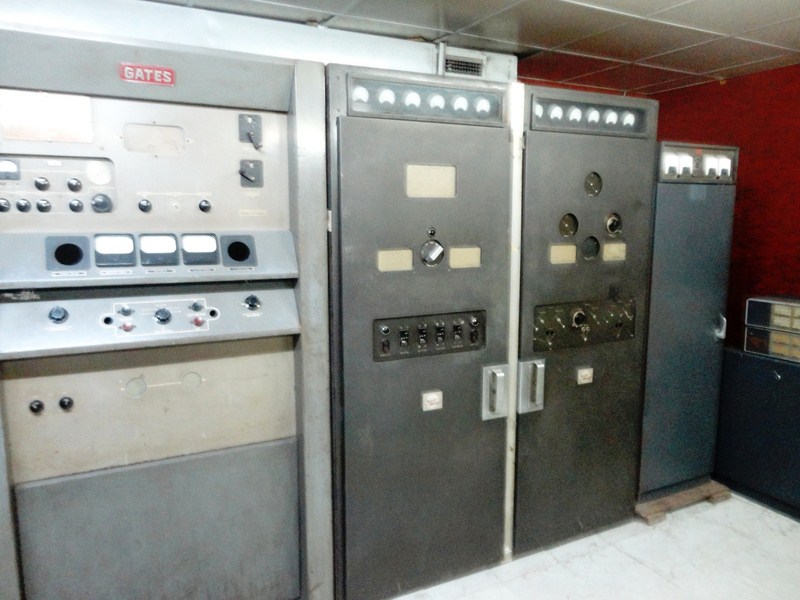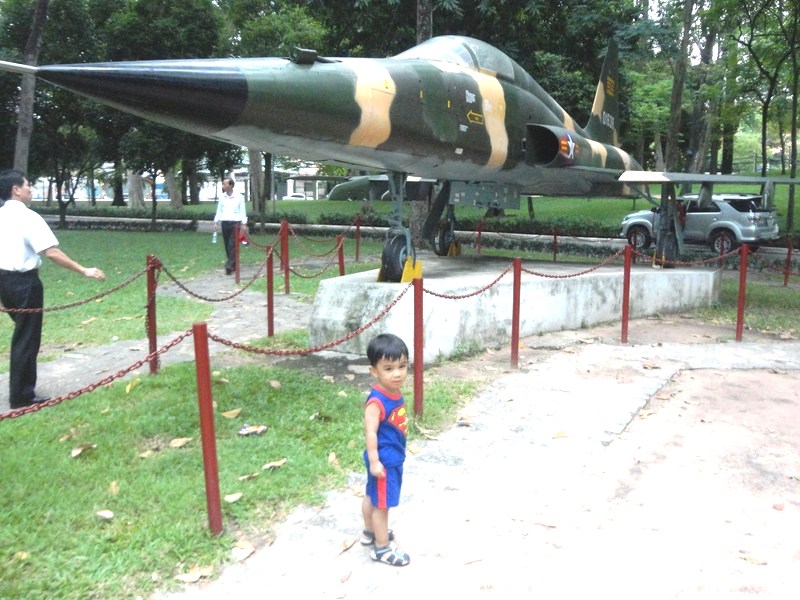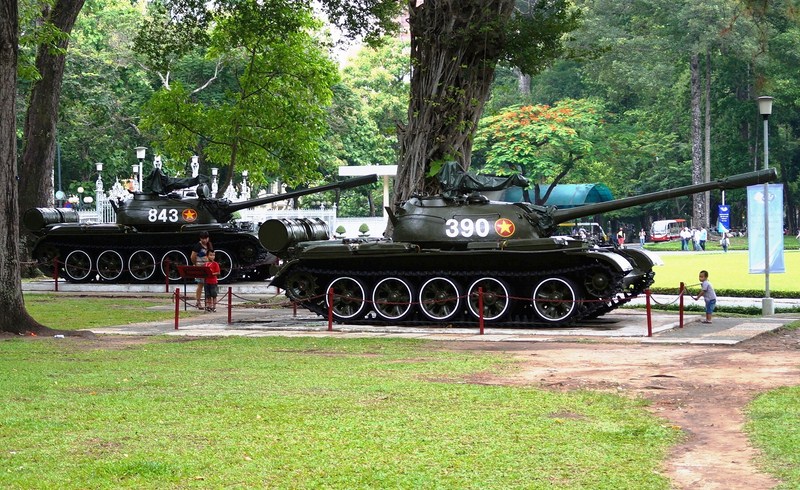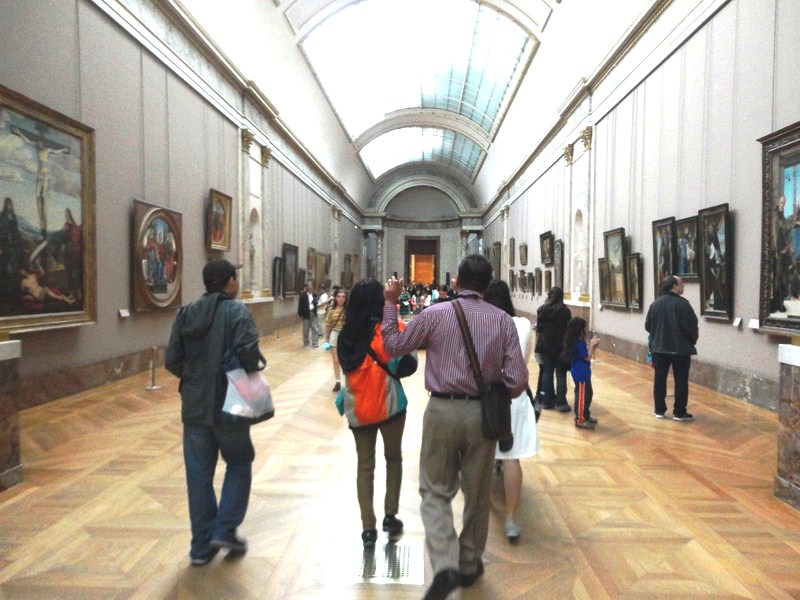
Jandy, Grace, Manny and Cheska walking along the Grand Gallery (Grande Galerie), First Floor, Denon Wing
Our first stop, upon the museum’s opening, was the Painting Collection which has more than 7,500 works, from the 13th century to 1848. Nearly two-thirds are by French artists while more than 1,200 are Northern European. The French and Northern European works are in the Richelieu Wing and Cour Carrée while the Spanish and Italian paintings are on the first floor of the Denon Wing.
Check out “Louvre Museum“
The Italian paintings compose most of the remnants of Francis I and Louis XIV’s collections, others are unreturned artwork from the Napoleonic Era, and some were bought. The collection began with Francis I, who acquired works from Italian masters such as Raphael, Michelangelo and several works of Giambattista Pittoni .
Exemplifying the French School are the early Avignon Pietà of Enguerr and Quarton; the anonymous painting of King Jean le Bon (c.1360), possibly the oldest independent portrait in Western painting to survive from the post Classical era; Hyacinthe Rigaud‘s Louis XIV; Jacques-Louis David‘s The Coronation of Napoleon; and Eugène Delacroix‘s Liberty Leading the People.
The notable Italian holdings, particularly the Renaissance collection, include works by Andrea Mantegna and Giovanni Bellini‘s Calvarys, which reflect realism and detail “meant to depict the significant events of a greater spiritual world.” The High Renaissance collection includes works of Leonardo da Vinci, Caravaggio and, from 16th century Venice, Titian‘s Le Concert Champetre, The Entombment and The Crowning with Thorns.
Check out “Louvre Museum – Grand Gallery,” “Louvre Museum – Daru Room,” “Louvre Museum – The State Room,” “Louvre Museum – Mollien Room” and “Louvre Museum – Salon Carre“
Some of the best known paintings of the museum have been digitized by the French Center for Research and Restoration of the Museums of France.
- Salle Boucher (France) – Mid-18th century works of Francois Boucher, the favorite painter of the Marquise de Pompadour, Louis XV’s mistress. Room 927, Second Floor, Sully Wing
- Salle Vien (France) – Works of Joseph-Marie Vien and the antiquarian the Comte de Caylus, pioneers of Neoclassicism in France. Room 934, Second Floor, Sully Wing
- Carlos Besteigui Collection – devoted to the donation made n 1942 by Carlos de Beistegui (Mexico, 1863–Biarritz, 1953), it consists chiefly of portraits, and includes works by the 15th-century Burgundian Master, Hey, Rubens, van Dyck, Largillierre, Nattier, Drouias, Fragonard, Goya, David, Lawrence, Gérard, Ingres, Meissonnier, and Zuloaga. Room 901, Second Floor, Sully Wing
- Salle Restout (France) – Works of Jean Restout, the leading religious painter of his day. Room 924, Second Floor, Sully Wing.
- Painters of Louis XIV Room (France) – numerous decorative projects at Versailles and other royal residences, commissioned by Louis XIV and all overseen by Le Brun, who gathered a team of noted specialists and succeeded in rallying personalities such as Jouvenet and La Fosse to the cause. First Floor, Sully Wing
- Charles Le Brun Room (France) – features enormous compositions of Charles Le Brun, royal painter to Louis XIV, illustrating the life of the king’s hero and model, Alexander the Great.
- Room 914, Second Floor, Sully Wing
- Salle Watteau (France) – features Watteau’s highly original art influenced by the French colorists, and also by his master, Claude Gillot, who introduced him to the fête galanteand scenes drawn from the theater. Room 917, Second Floor, Sully Wing
- Salle des Etats (Mona Lisa room, Italy) – A new setting for Leonardo da Vinci’s Mona Lisa and Venetian Renaissance paintings. Room 711, First Floor, Denon Wing.
- Salle Mollien (Romanticism, France) – houses large French Romantic paintings. Room 700, First Floor, Denon WingSalon Carré (Italy) – displays Italian paintings from the 12th to 15th centuries. Room 708, First Floor, Denon Wing
- Grande Galerie (Italy) – houses collections of Italian paintings. Room 710, 712, 716, First Floor, Denon Wing
- Salle Daru (Neoclassicism) – houses large-scale French Neoclassical paintings. Room 702, First Floor, Denon Wing
- Galerie Médicis (Flanders – Rubens) – displays 24 monumental canvases, painted by Rubens between 1622 and 1625, originally housed in the Luxembourg palace, home of the Italian-born French queen Marie de Médici. Room 801 , Second Floor, Richelieu Wing
- Salle Rembrandt (Holland – Rembrandt) – collection of Rembrandt’s paintings covering a wide range of subjects and periods, including a number of well-known self-portraits. Room 845, Second Floor, Richelieu Wing
- Holland, Second Half of the 17th Century – late 17th century Dutch paintings represented by Johannes Vermeer, and contemporaries such as Pieter de Hooch, Ruisdael, and Ter Borch. Room 837, Second Floor, Richelieu Wing
- Second School of Fontainebleau (France) – features the new decorative style of artists of the Second School of Fontainebleau. Room 824, Second Floor, Richelieu Wing
- The Netherlands, 16th Century – features 16th-century Dutch painting, particularly that of the Antwerp school and the Romanists. Room 809, Second Floor, Richelieu Wing
- The Netherlands, Second Half of the 16th Century – displays masterpieces of late 16th- and early-17th-century Northern and German Mannerism. Room 806, Second Floor, Richelieu Wing
- Pays-Bas, Netherlands, First Half of the 16th Century – features works of Northern artists who assimilated Italian influences, but continued to work in the pictorial tradition established by the founders of the Dutch school of painting during the preceding century. Room 811, Second Floor, Richelieu Wing.
Louvre Museum: 75001 Paris, France. Tel: +33 1 40 20 50 50. Open daily, except Tuesdays and holidays, 9 AM- 6 PM (until 10 PM on Wednesday and Friday evenings).
The Louvre has three entrances: the main entrance at the pyramid, an entrance from the Carrousel du Louvre underground shopping mall, and an entrance at the Porte des Lions (near the western end of the Denon wing).
Admission is free, from October to March, on the first Sunday of every month. Still and video photography is permitted for private, noncommercial use only in the galleries housing the permanent collection.The use of flash or other means of artificial lighting is prohibited. Photography and filming are not permitted in the temporary exhibition galleries.
How To Get There: the Louvre can be reached via Metro lines 1 and 7, station Palais Royal – Musée du Louvre Métro or the Louvre-Rivoli stations. By bus, take No. 21, 24, 27, 39, 48, 68, 69, 72, 81, 95 as well as the touristic Paris l’Open Tour. By car, there is an underground parking reachable by Avenue du Général Lemonier, every day from 7 AM – 11 PM.

